







Circulation & Readership Profile
3,200/page
3,200/page
The publisher reserves the right to edit, revise or reject any advertisement deemed unsuitable or inappropriate. •
This one-time-only special rate o er is for new advertisers.
Space availability is subject to booking on a first-come-first-served basis.
Clients will provide ready-to-print artwork in PDF format with 300dpi.
Full page: 210mm x 297mm, 3mm extra bleed sizes for 4-sided.
Advertising space must be utilised before 30 June 2025.
*Please note that the above rate will be subjected to 8% SST. For overseas advertisers, an additional 25% will be charged.
Rate shown above excludes 15% advertising agency commission.
Payment term: Full advance payment.
Artwork submission deadline is on (or before) the 1st week of the prior month of publication.
After the material deadline, no cancellation or alteration to the advertisement will be entertained.
Any cancellation after signing the advertising order will result in a 50% penalty charge.
JURUTERA has an estimated readership of 200,000 professionals. Our esteemed readership consists of certified engineers, decision making corporate leaders, CEOs, government officials, project directors, entrepreneurs, project consultants, engineering consulting firms and companies involved with engineering products and services.
Publica�on month/s:
Company’s Stamp & Authorised Signature
Date


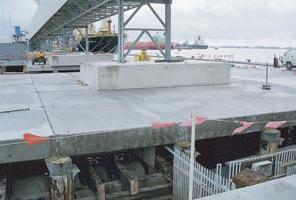
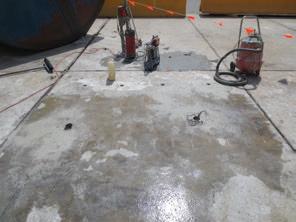

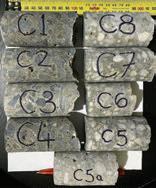
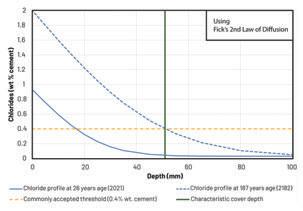


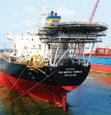
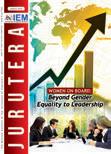

















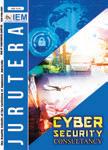

President: Ir. Prof. Dr Jeffrey Chiang Choong Luin
Deputy President: Ir. Yau Chau Fong
Vice Presidents:
Ir. Dr Siti Hawa binti Hamzah, Ir. Fam Yew Hin, Ir. Chen Harn Shean, Ir. Ts.
Prof. Dr David Chuah Joon Huang, Y.Bhg. Dato’ Ir. Wan Nazari bin Wan Jusoh, Ir. Dr Bernard Lim Kee Weng, YBhg. Dato’ Ir. Nor Hisham bin Mohd Ghazalli
Honorary Secretary: Ir. Ts. Prof. Dr Tan Chee Fai
Honorary Treasurer: Ir. Dr Siow Chun Lim
Immediate Past President: Dato’ Ir. Prof. Dr Norlida binti Buniyamin
Past Presidents:
Y.Bhg. Academician Tan Sri Dato’ Seri Ir. Prof. Emeritus Dr Chuah Hean Teik, Y.Bhg. Dato’ Paduka Ir. (Dr) Hj. Keizrul bin Abdullah, Y.Bhg. Dato’ Ir. Lim Chow Hock, Ir. Dr Tan Yean Chin, Ir. Ong Ching Loon
Civil Representative: Ir. Tu Yong Eng
Mechanical Representative: Ir. Ng Yong Kong
Electrical Representative: Ir. Mohd. Aman bin Hj. Idris
Structural Representative: Ir. Dr Tan Kuang Leong
Chemical Representative: Ir. Kim Kek Seong
Representative to Other Disciplines: Ir. Assoc. Prof. Dr Wong Yew Hoong
ICT and Multimedia Representative: Ir. Assoc. Prof. Dr Lai Khin Wee
Women Engineers Representative: Ir. Ts. Assoc. Prof. Dr Syuhaida binti Ismail
Young Engineers Section Representatives:
Mr. Muhammad Ashiq Marecan bin Hamid Marecan, Grad. IEM, Mr. Lim Yiren, Grad. IEM, Mr. Darshan a/l Balasubramaniam, Grad. IEM, Mr. Chuah Pei Lim, Grad. IEM, Ms. Ong Ye Shian, Grad. IEM
Council Members:
Ir. Rusnida binti Talib, Ir. Prof. Dr Lau Hieng Ho, Ir. Muhammad Azmi bin Ayub, Ir. Arul Hisham bin Abdul Rahim, Ir. Razmahwata bin Mohd Razalli, Ir. Simon Yeong Chin Chow, Ir. Dr Chan Seong Phun, Ir. Yam Teong Sian, Ir. Kwok Yew Hoe, Ir. Dr Lee Choo Yong, Ir. Sharifah Azlina binti Raja Kamal Pasmah, Ir. Ts. Dr Wan Syakirah binti Wan Abdullah, Ir. Dr Mui Kai Yin, Ir. Shamil bin Abu Hassan, Ir. Ts. Wan Rizaluddin Abdullah bin Wan Ali, Ir. Dr Lam Wei Haur, Ir. Dr Angelia Liew San Chuin, Ir. Prof. Dr Zuhaina binti Zakaria, Ir. Begum Irdawati binti Dowlad Rahuman, Ir. Chong Chee Yen, Ir. Dr Khoo Chee Min, Ir. Abdul Razak bin Yakob, Ir. Dr Chan Swee Huat, Ir. Alex Looi Tink Huey, Ir. Sukhairul Nizam bin Abdul Razak, Y.Bhg. Dato’ Ir. Ting Chek Choon (casual vacancy for YBhg. Dato’ Ir. Nor Hisham bin Mohd Ghazalli)
Council Members by Invitation:
YBhg. Dato’ Ir. Ts. Abdul Razib bin Dawood, Ir. Gopal Narian Kutty, Ir. Oon Chee Kheng
Branch Chairman
1. Pulau Pinang : Ir. Chan Wah Cheong
2. Selatan : Ir. David Puen Ming Shen
3. Perak : Ir. Assoc. Prof. Dr Nursyarizal bin Mohd Nor
4. Pahang : Ir. Harzah Masni binti Ramli
5. Kedah-Perlis : Ir. Roshasmawi bin Abdul Wahab
6. Negeri Sembilan : Ir. Khoo Nee Keong
7. Kelantan : Ir. Abrizan bin Abdul Kadir
8. Terengganu : Ir. Mazlan bin Che Ku Ahmad
9. Melaka : Ir. Lim Su Hian
10. Sarawak : Ir. Sim Hui Kheng, Stephanie
11. Sabah : Ir. Mohd Yaakob bin Jaafar
12. Miri : Ir. Meheron Selowara Joo
Chairman: Ir. Fam Yew Hin
Vice Chairman: Ir. Alex Looi Tink Huey
Secretary: Ir. Ts. Assoc. Prof. Dr Hum Yan Chai
Chief Editor: Ir. Fam Yew Hin
Principal Bulletin Editor: Ir. Alex Looi Tink Huey
Principal Journal Editor: Ir. Ts. Prof. Dr Teo Fang Yenn
Chairman Webportal: Ir. Dr Hasril bin Hasini
Resource Centre Chairman: Ir. Razmahwata bin Mohd Razalli
Committee Members:
Ir. Ong Guan Hock, Ir. Lee Chang Quan, Ir. Lau Tai Onn, Ir. Yee Thien Seng, Ir. Dr Lee Choo Yong, Ir. Ts. Dr Tan Kim Seah, Ir. Assoc. Prof. Dr Lee Tin Sin, Ir. Dr Bhuvendhraa Rudrusamy, Ir. Rusnida binti Talib, Ir. Dr Nor Ilia Anisa binti Aris, Ir. Ts. Wong Chee Fui, Ir. Dr Moey Lip Kean, Ir. Abdul Azim bin Abdul Rahman, Ir. Dr Aidil bin Chee Tahir, Ir. Kwok Yew Hoe, Ir. Begum Irdawati binti Dowlad Rahuman, Ir. Dr Sara Lee Kit Yee, Dr Sudharshan N. Raman, Grad. IEM, Ms. Michelle Lau Chui Chui, Grad. IEM, Mr. Chuah Pei Lim, Grad. IEM, Ms. Loo Suk Sin, Mr. Ng Han Wei
Chief Editor: Ir. Fam Yew Hin
Principal Bulletin Editor: Ir. Alex Looi Tink Huey
Committee Members:
Ir. Lau Tai Onn, Ir. Ong Guan Hock, Ir. Yee Thien Seng, Ir. Dr Oh Seong Por, Ir. Ts. Prof. Dr Teo Fang Yenn, Ir. Razmahwata bin Mohd Razalli, Dr Sudharshan N. Raman, Ir. Lee Chang Quan, Ir. Dr Lee Choo Yong, Ir. Begum Irdawati bin Dowlad Rahuman, Ir. Ts. Dr Tan Kim Seah, Ms. Michelle Lau Chui Chui, Grad. IEM, Ir. Ahmad Rafidi bin Mohayiddin
THE INSTITUTION OF ENGINEERS, MALAYSIA
Bangunan Ingenieur, Lots 60 & 62, Jalan 52/4, P.O. Box 223, (Jalan Sultan), 46720 Petaling Jaya, Selangor Darul Ehsan. Tel: 603-7890 0130 Fax: 603-7957 7678
E-mail: sec@iem.org.my Homepage: http://www.myiem.org.my
COVER NOTE & EDITOR’S NOTE

Paving the Way for Increased Energy Efficiency
Illuminating the Future: Engineers at the Heart of Energy Efficiency Revolution
COVER STORY
Powering Tomorrow: Engineers Navigating Energy Efficiency Revolution
EECA 2024 Unveiled: What You Need to Know and How to Prepare
Advancing Malaysia’s Energy Service Company (ESCO) Ecosystem: Financial Models & Energy Contracts for a Sustainable Future
TNB: Proactive Energy Management Solutions for Sustainable Future
Pioneering Showcase of Sustainable Energy Solutions in Sabah
AFEO Energy Forum 2024 Champions Sustainable

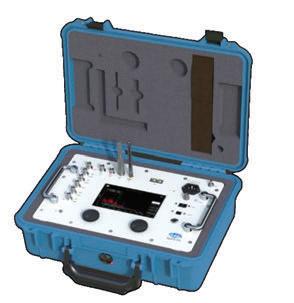


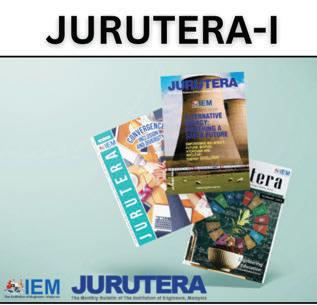

DIMENSION PUBLISHING SDN. BHD. [ 199701034233 (449732-T) ]
Level 18-01, PJX-HM Shah Tower, No. 16A, Persiaran Barat, 46050 Petaling Jaya, Selangor Darul Ehsan, Malaysia. Tel: +(603) 7493 1049 Fax: +(603) 7493 1047
E-mail: info@dimensionpublishing.com Website: www.dimensionpublishing.com
Chairman Robert Mebruer
CEO/Publisher Shirley Tham shirley@dimensionpublishing.com
Head of Marketing & Business Development
Joseph How joseph@dimensionpublishing.com
Production Editor Tan Bee Hong bee@dimensionpublishing.com
Contributing Writers
Putri Zanina putri@dimensionpublishing.com
Hanna Sheikh Mokhtar hanna@dimensionpublishing.com
Senior Graphic Designer
Sofia Hanis Mohd Uzir sofia@dimensionpublishing.com
Graphic Designer
Nicole Theng nicole@dimensionpublishing.com
Advertising Consultants
Tham Choon Kit ckit@dimensionpublishing.com
Accounts Cum Admin Executive Yong Yen Yin yenyin@dimensionpublishing.com
For advertisement placements and subscriptions, please contact:
DIMENSION PUBLISHING SDN. BHD. [ 199701034233 (449732-T) ]
Tel: +(603) 7493 1049
Fax: +(603) 7493 1047
E-mail: info@dimensionpublishing.com Website: www.dimensionpublishing.com
Subscription Department E-mail: info@dimensionpublishing.com
JURUTERA MONTHLY CIRCULATION: OVER 50,000 MEMBERS
Submission or placement of articles in JURUTERA could be made to the:
Chief Editor THE INSTITUTION OF ENGINEERS, MALAYSIA (IEM)
Bangunan Ingenieur, Lots 60 & 62, Jalan 52/4, P.O. Box 223 (Jalan Sultan), 46720 Petaling Jaya, Selangor.
Tel: +(603) 7890 0130
Fax: +(603) 7957 7678
E-mail: pub@iem.org.my Website: http://www.myiem.org.my
JURUTERA is published and printed monthly by Dimension Publishing Sdn. Bhd.
PUBLICATION DISCLAIMER
The publication has been compiled by both IEM and Dimension with great care and they disclaim any duty to investigate any products, process, services, designs and the like which may be described in this publication. The appearance of any information in this publication does not necessarily constitute endorsement by IEM and Dimension. There is no guarantee that the information in this publication is free from errors. IEM and Dimension do not necessarily agree with the statement or the opinion expresssed in this publication.
COPYRIGHT JURUTERA Bulletin of IEM is the official magazine of The Institution of Engineers, Malaysia (IEM) and is published by Dimension Publishing Sdn. Bhd. The Institution and the Publisher retain the copyright over all materials published in the magazine. No part of this magazine may be reproduced and transmitted in any form or stored in any retrieval system of any nature without the prior written permission of IEM and the Publisher. © 2025, The Institution of Engineers, Malaysia (IEM) and Dimension Publishing Sdn. Bhd.
by Ir. Kwok Yew Hoe Chairman, Electrical Engineering Technical Division (EETD) Session 2024/2025

At the COP28 summit at the end of 2023, nearly 200 countries reached a landmark agreement to work together to collectively double the global average annual rate of energy efficiency improvements by 2030. A year on from this historic agreement, this has yet to translate into faster efficiency progress on a global scale. However, in Malaysia, The Energy Efficiency & Conservation Act (EECA) 2024 has come into force, paving the way for accelerated adoption of energy efficiency initiatives.
While Energy Efficiency is termed First Fuel in clean energy transitions, its implementation, in practice, generally lags behind the new generation of green energy, particularly solar and hydro. Perhaps this is because it is merely a reduction in consumption compared to addition in generation for the latter. This is now being addressed at policy level with the EECA and the engineering community should view this as an important element to implement.
This publication is also timely, given that the Energy Efficiency & Conservation Regulations (EECR) 2024 has come into effect on 1 January 2025.
by Ir. Alex Looi Tink Huey Principal Bulletin Editor

As the dawn of 2025 brings new opportunities, challenges and resolutions, February’s JURUTERA is charged with the electrifying theme, Powering Tomorrow: Engineers Navigating the Energy Efficiency Revolution. This issue spotlights a pivotal moment in the Malaysian energy landscape, with the enforcement of the Energy Efficiency & Conservation Act (EECA) 2024. Engineers, as trailblazers of change, are at the forefront of this transformation, redefining how we think about energy consumption, sustainability and innovation.
From reimagining building energy performance to setting benchmarks for appliances and fostering a culture of conservation, the EECA promises a greener tomorrow. But this revolution requires not just compliance – it also require leadership – your leadership. As we explore strategies, success stories and the roles engineers will play, we invite you to harness your expertise, ignite change and illuminate the path to a more sustainable Malaysia. Together, let’s power a brighter, more efficient future.
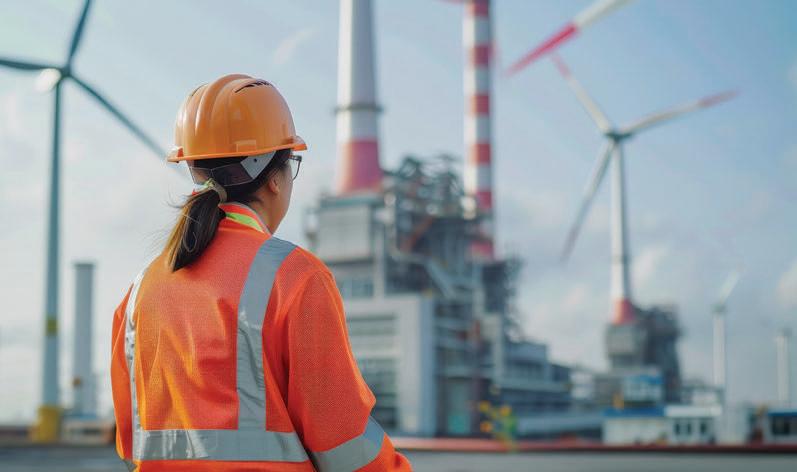
Interviewee:
Dato’ Ir. Ts. Razib Dawood CEO of the Energy Commission
Dato’ Ir. Ts. Razib Dawood talks at length about the newly minted Energy Efficiency and Conservation Act (EECA) 2024 which is a legal structure that promotes sustainability, innovation and investment in energyefficient technologies, offering a robust foundation to transition Malaysia toward a sustainable energy future.
Malaysia’s energy sector reached another milestone on 1 January 2025 when the new Energy Efficiency and Conservation Act (EECA) 2024 came into effect. It is also a significant achievement for the nation as the EECA introduces a more comprehensive framework for energy efficiency, covering both electrical and thermal energy systems. EECA is a law under the Energy Transition and Water Transformation Ministry and was passed in June last year. It is one of the key components of the National Energy Transition Roadmap (NETR), the national initiative towards carbon neutrality by 2050.
EECA 2024 regulates the efficient consumption and conservation of energy in Malaysia with the aim of improving energy efficiency across various sectors, reducing waste of energy and supporting environmental goals, including the aim to achieve carbon neutrality. Energy conservation involves using less energy by adjusting habits while energy efficiency entails the use of technology that requires less energy to perform the same function.
For a start, the law applies in Peninsular Malaysia and in the Labuan Federal Territory in East Malaysia, excluding the regions of Sabah and Sarawak. Its comprehensive scope covers the industrial, commercial and residential sectors and replaces the Efficient Management of Electrical Energy Regulations (EMEER) 2008, which is now revoked. In the EECA, the industrial and commercial sectors are governed as either energy consumers of 21,600 gigajoules (GJ) or more annually, or office buildings with a gross floor area (GFA) of 86,111 sq ft (8,000 sqm) or more. The Act mandates energy audits, energy management systems, and compliance with Minimum Energy Performance Standards (MEPS) for energy-using products. In this respect, energy audit report is prepared to assist the energy consumer in understanding their energy demand trend and finding any opportunity for improvement in energy efficiency.
“Unlike the EMEER 2008, which focused solely on electricity, the EECA encompasses all major energy forms, addressing inefficiencies in industries, commercial buildings, and other energy-intensive sectors. The inclusion of thermal energy is particularly significant, as many industrial processes heavily depend on steam,
At the time of the interview for this article on 28 January 2025, Dato’ Ir. Ts. Razib Dawood was still the CEO of the Energy Commission. As at 1 February 2025, he assumes the position of the new Executive Director of the ASEAN Centre for Energy (ACE).
heating, and cooling, which were previously overlooked,” said Dato’ Ir. Ts. Razib Dawood, the CEO of the Energy Commission which is the regulatory body entrusted to enforce EECA.
Elaborating, Dato’ Ir. Ts. Razib added: “We want to have a strong Act of Parliament to address particularly the demand side of management. This law is mooted to be an independent law to regulate the energy sector. Demand has to be managed and controlled. It took us many years to moot the Act and finally accomplished it in 2024. We will enforce the Act through our newly set up department, i.e. the Department of Energy Efficiency and Conservation. Efforts have already been undertaken to increase the number of staff, deploy IT for registration, upload information online, update reports, and deploy Artificial Intelligence, among others, to help in our enforcement activities.”
“The starting date for enforcement was 1 January 2025 but this served as a ‘soft landing’ as we needed to give a one-year grace period for compliance by the industry players. We also needed to create awareness and engage with them so that they would understand the requirements of the Act and why these were necessary.”
He regarded the EECA as a game changer for it could regulate the energy sector in Malaysia on its own. For instance, key clauses like Section 8 (energy audits) and Section 15 (energy efficiency improvement plans) enforce systematic evaluations and upgrades in energy use. EECA introduces penalties for non-compliance, ensuring accountability among energy users. Thus, the EECA sets a benchmark for Malaysia, aligning the country with global energy efficiency standards, including in ASEAN.
“By requiring businesses to improve energy efficiency holistically, the EECA ensures a broader and more impactful reduction in energy consumption and carbon emissions. Savings from energy conservation undertakings can pay off capex (capital expenditure). More importantly, the less electricity generated, the less carbon we emit into the atmosphere. Energy Efficiency is part of carbon emission reduction initiative. IEM can study if Malaysia should recognise certification on energy efficiency. That’s a game-changing thought,” he said.
Dato’ Ir. Ts. Razib believed that engineers could play a pivotal role in the successful enforcement of the EECA by serving as registered energy managers or auditors. He said engineers themselves are practitioners who must be compliant and technically competent.
“If engineers do not have thermal expertise, now is the time to develop it. There’s huge opportunity for employment in this area, covering the whole value chain, from design to construction, and operation maintenance to audit. I understand that IEM is now in the process of educating engineers in this area. It is important for engineers to understand the law and the guidelines, observe and practise,” he said, adding that as energy managers and
auditors, their responsibilities include conducting energy audits under Section 8, preparing energy efficiency and conservation reports, and implementing energy management systems (EnMS) as required by Section 6. These tasks demand technical expertise to analyse energy consumption patterns and identify areas for improvement, including both electrical and thermal energy systems. The inclusion of thermal energy in the EECA expands the scope of energy managers' work.
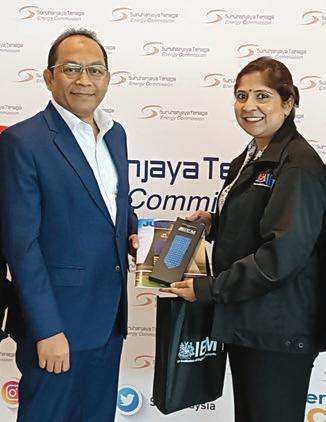
“For example, energy managers must now evaluate steam systems, cooling towers and industrial boilers to optimise thermal processes and minimise energy losses. They are also tasked with designing and implementing energy-saving measures, such as waste heat recovery, combined heat and power (CHP) systems and improved insulation techniques, which were not prioritised under EMEER 2008,” said Dato’ Ir. Ts. Razib. He also stated that beyond technical roles, engineers can also act as advisors and advocates for energy efficiency within their organisations. By staying updated on compliance requirements and advancing innovative solutions, he has the confidence that engineers can drive organisational change, reduce operating costs, and enhance environmental performance. He urged engineers to leverage on the EECA which already provides a structured platform for engineers to play a role in leading Malaysia’s energy efficiency revolution.

Dato’ Ir. Ts. Razib Dawood CEO of the Energy Commission
Starting his early career with Tenaga Nasional Berhad Engineers Sdn. Bhd., Dato’ Ir. Ts. Razib Dawood has more than 30 years of professional experience, having worked for both Malaysian and Australian national power utilities, independent power producers, Transmission Network Service Provider (TNSP), government regulator, and as a consultant for renewable energy. He had held many roles such as a construction engineer, project manager, technical advisor, systems planning engineer and a power system study specialist. In August 2019, he was appointed the CEO of the Energy Commission, a position he held till the end of January 2025.
Dato’ Ir. Ts. Razib also believed that the EECA would open up a wealth of opportunities for young engineers, particularly in the growing field of energy efficiency. He said by becoming registered energy managers or auditors under Section 25, young engineers can play an active role in optimising energy use across industries. The expanded scope of the Act, which includes thermal energy systems, also allows them to gain expertise in areas like steam optimisation, waste heat recovery, and energy-efficient heating and cooling technologies.
In addition to undertaking technical roles, young engineers could contribute to research and development. Dato’ Ir. Ts. Razib said universities and research institutions are expected to collaborate on innovative energy-saving technologies, particularly for thermal processes, which were previously not included under EMEER 2008.
“Young Engineers can work on projects that integrate renewable energy systems such as solar thermal, into energy-efficient designs, further enhancing their skillsets. The EECA also promotes entrepreneurship in energy efficiency. Young engineers can venture into startups specialising in energy audits, retrofitting services, or manufacturing energy-efficient products, or embarking on the Internet of Things (IoT) and boost digitalisation. All these present employment opportunities. The future is unknown, especially when we stop the use of conventional fuel and things which we are trained for and familiar with but the unknown represents opportunities. Whatever we do, our system must remain stable, secure and sustainable,” he stressed, while also mentioning that with government support through incentives and funding, the EECA ensures that young engineers will also be wellpositioned to lead Malaysia’s energy efficiency transformation.
While Dato’ Ir. Ts. Razib is optimistic about the Energy Commission successfully enforcing EECA, he is also aware of the challenges in the early stages of implementation.
“The early enforcement will face several challenges, particularly in industries transitioning from EMEER 2008's narrower focus to the EECA's broader scope. One significant challenge is the financial burden of compliance, especially for small and medium-sized enterprises (SMEs). Upgrading both electrical and thermal systems to meet Minimum Energy Performance Standards (MEPS) requires substantial investments in energy-efficient technologies and infrastructure,” he said, adding that another challenge is the limited availability of skilled energy managers and auditors certified under Section 25 of the EECA.
“Many industries may struggle to find qualified professionals to conduct audits, prepare energy management
plans and implement the required efficiency measures. This shortage can delay compliance and hinder the overall effectiveness of the Act. Furthermore, awareness and understanding of thermal energy efficiency remain low in many sectors. Businesses accustomed to focusing solely on electrical energy may need extensive training and guidance to address thermal energy inefficiencies,” he said.
To overcome these challenges, he emphasised that the Energy Commission must launch robust capacity building for the relevant stakeholders and ensure clear communication of compliance requirements. “Within the grace period of one year for compliance, we will focus on building awareness, skills and competency, and further develop our IT system to cater to the need for an online platform for application as well as online reporting to boost energy efficiency. We will also address shortage in required expertise as well as pave the way for the industry players to obtain financing facility to enable them to invest in energy efficiency measures. The key thing is, why waste when we can save energy,” he said.
The National Energy Transition Roadmap (NETR) sets ambitious targets for Malaysia to achieve netzero emissions by 2050. The plan is comprehensive and outlines a gradual increase in renewable energy shares, targeting 31% by 2025, 40% by 2035, and 70% by 2050. Acknowledging that the targets are ambitious, Dato’ Ir. Ts. Razib has set the ball rolling for the Energy Commission to utilise the EECA to assume a critical role in Malaysia’s net-zero carbon emissions initiatives by targeting both electrical and thermal energy inefficiencies. This comprehensive approach addresses a significant portion of the energy consumption in industries, commercial buildings and residential sectors.


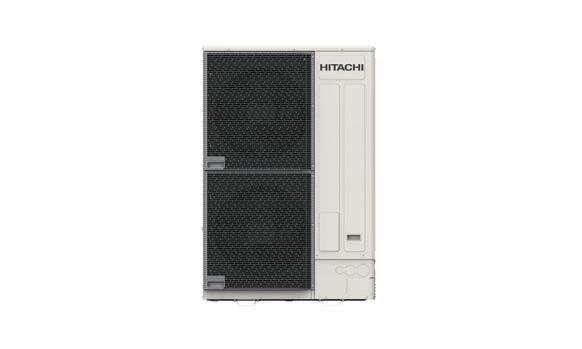



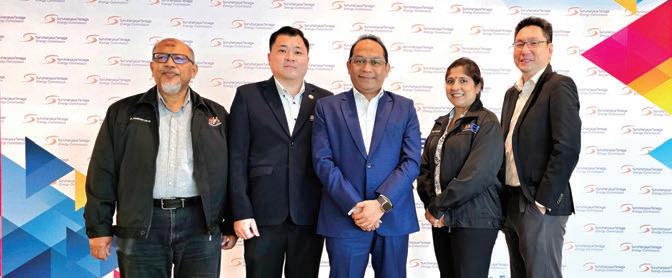
He elaborates: “Thermal energy processes, such as steam generation, heating, and cooling, contribute heavily to greenhouse gas emissions and their inclusion in the EECA ensures broader carbon reduction. Provisions like Section 15, which mandates energy efficiency improvement plans for buildings which do not meet the minimum requirement of the Energy Intensity Performance (EIP), compel organisations to adopt measures, such as waste heat recovery and improved insulation. These measures directly reduce energy consumption and consequently, carbon emissions.”
Additionally, he said Section 21 enforces MEPS for energy-using products, ensuring that only energy-efficient equipment is available in the market, further driving carbon reductions. The EECA also complements Malaysia’s renewable energy goals by reducing overall energy demand, enabling a larger share of energy needs to be met by renewable sources. By enforcing systematic energy efficiency practices and integrating renewable energy solutions, the Act aligns with Malaysia’s commitment to global climate agreements and accelerates the nation’s transition to a low-carbon economy.
Dato’ Ir. Ts. Razib cites one notable example of engineering innovation in Malaysia – the implementation of waste heat recovery systems in the manufacturing sector. These systems capture excess heat from industrial processes and reuse it for other applications, such as preheating feedwater in boilers or generating electricity through combined heat and power (CHP) systems. This reduces fuel consumption and lowers operational costs, while also cutting carbon emissions. Under the EECA, such innovations are encouraged and enforced through
provisions like Section 8, which requires energy audits to identify opportunities for efficiency improvements.
“In commercial buildings, innovations such as smart HVAC systems and advanced building insulation have significantly reduced energy intensity, aligning with the Act’s focus on both electrical and thermal energy,” he adds, emphasising that the expanded scope of the EECA allows engineering innovations to address inefficiencies across a broader spectrum, encouraging industries to adopt cutting-edge technologies and sustainable practices. By mandating compliance with MEPS and supporting energy efficiency improvement plans, he said the Act creates an environment conducive to innovation and continuous improvement.
Commenting on the impact of the EECA on the country’s RE sector, Dato’ Ir. Ts. Razib said the Act can help strengthen Malaysia's RE sector by reducing overall energy demand and creating a more sustainable energy ecosystem. This is done by mandating energy efficiency practices under Section 6 (Energy Management System) and Section 15 (Energy Efficiency Improvement Plan). Thus, the Act ensures that energy consumption is optimised, leaving room for RE sources to contribute a larger share to the energy mix. Additionally, he stated that the EECA supports renewable energy integration through complementary policies.
“For example, buildings and industries required to meet energy efficiency standards can integrate solar thermal systems, heat pumps or biogas recovery into their operations. These renewable solutions not only enhance compliance with efficiency goals but also reduce greenhouse gas emissions,” he said.
The Act also encourages innovation in RE technologies by fostering collaboration between industries and research institutions. By reducing dependency on fossil fuels and increasing the adoption of renewable sources, the EECA ensures Malaysia moves closer to achieving its renewable energy targets and carbon neutrality goals.
Dato’ Ir. Ts. Razib is confident that the EECA can provide a strong foundation for fostering partnerships and collaborations to enhance energy efficiency nationwide. He said public-private partnerships are critical under the Act, where industries can collaborate with government bodies and private firms to finance and implement energy-efficient technologies. These partnerships can accelerate the adoption of advanced energy solutions, such as heat recovery systems and energy-efficient manufacturing processes.
On opportunities that exist for regional collaborations, Dato’ Ir. Ts. Razib said these include the development of unified MEPS for energy-using products, crossborder training programmes for energy managers, and joint research projects on emerging technologies. He pointed out that the EECA aligns with ASEAN energy initiatives, paving the way for Malaysia to collaborate with neighbouring countries on harmonised energy standards and policies. Malaysia’s leadership in energy efficiency can position it as a key player in shaping ASEAN’s sustainable energy future, fostering partnerships that benefit the entire region.
“By sharing best practices and developing regional frameworks for MEPS, ASEAN countries can collectively improve energy efficiency across borders. Collaboration with universities and research institutions is also emphasised, particularly in areas of innovation for thermal energy systems and renewable energy integration,” said Dato’ Ir. Ts. Razib who propagated partnerships that leverage on the EECA. This can encourage the development of new technologies and methodologies that industries can adopt to meet efficiency targets while simultaneously advancing Malaysia’s energy efficiency capabilities.
Comparing Malaysia’s energy efficiency framework with other ASEAN countries, Dato’ Ir. Ts. Razib said Malaysia’s EECA is among the most comprehensive energy efficiency frameworks in ASEAN, especially with its inclusion of thermal energy efficiency. This broader scope allows Malaysia to target inefficiencies in industrial heating, cooling, and steam systems, areas that significantly contribute to overall energy consumption.
“The EECA’s stringent requirements, such as mandatory energy audits (Section 8) and compliance with MEPS (Section 21), ensure accountability and promote the adoption of advanced energy-efficient technologies.
Comparatively, many ASEAN countries have voluntary energy efficiency programmes, which limit the scale and impact of their initiatives,” he added.
Dato’ Ir. Ts. Razib encourages engineers who aspire to lead energy efficiency initiatives to first acquire the necessary certifications to become registered energy managers or auditors under Section 25 of the EECA. This certification equips them with the technical expertise and legal authority to conduct energy audits, develop efficiency plans, and manage compliance with the Act.
In addition to acquiring technical expertise, he stressed that engineers should focus on educating their organisations about the benefits of energy efficiency. Demonstrating the cost savings and sustainability impacts of energy-efficient technologies can help secure management buy-in for investments in advanced systems, such as waste heat recovery or energy-efficient HVAC systems.
He also suggested that engineers must stay updated on emerging technologies and regulatory changes under the EECA. By leveraging their technical knowledge and proactively identifying inefficiencies in both electrical and thermal systems, engineers can position themselves as leaders in the transition to sustainable energy practices within their organisations.
Looking ahead, Dato’ Ir. Ts. Razib said he envisioned the future when energy efficiency will become an integral part of Malaysia’s economic and industrial activities. By mandating compliance with energy efficiency standards and introducing systematic energy audits, he said the EECA can foster a culture of sustainability across all sectors. This will not only reduce energy wastage but also enhance the competitiveness of Malaysian industries in the global market.
“A significant aspect of this revolution is the inclusion of thermal energy systems, which ensures that all major energy consumption areas are addressed. Innovations such as combined heat and power (CHP) systems, solar thermal integration, and advanced insulation technologies are expected to become standard practices, reducing reliance on fossil fuels and lowering carbon emissions. Moreover, the EECA promotes human capital development by creating opportunities for skilled energy managers, auditors, and researchers to drive Malaysia’s energy efficiency agenda,” he said.
Concluding, he added that with robust enforcement, continuous innovation, and public-private collaboration, Malaysia is poised to lead the region in sustainable energy practices, setting an example for achieving net-zero carbon emissions and energy security.
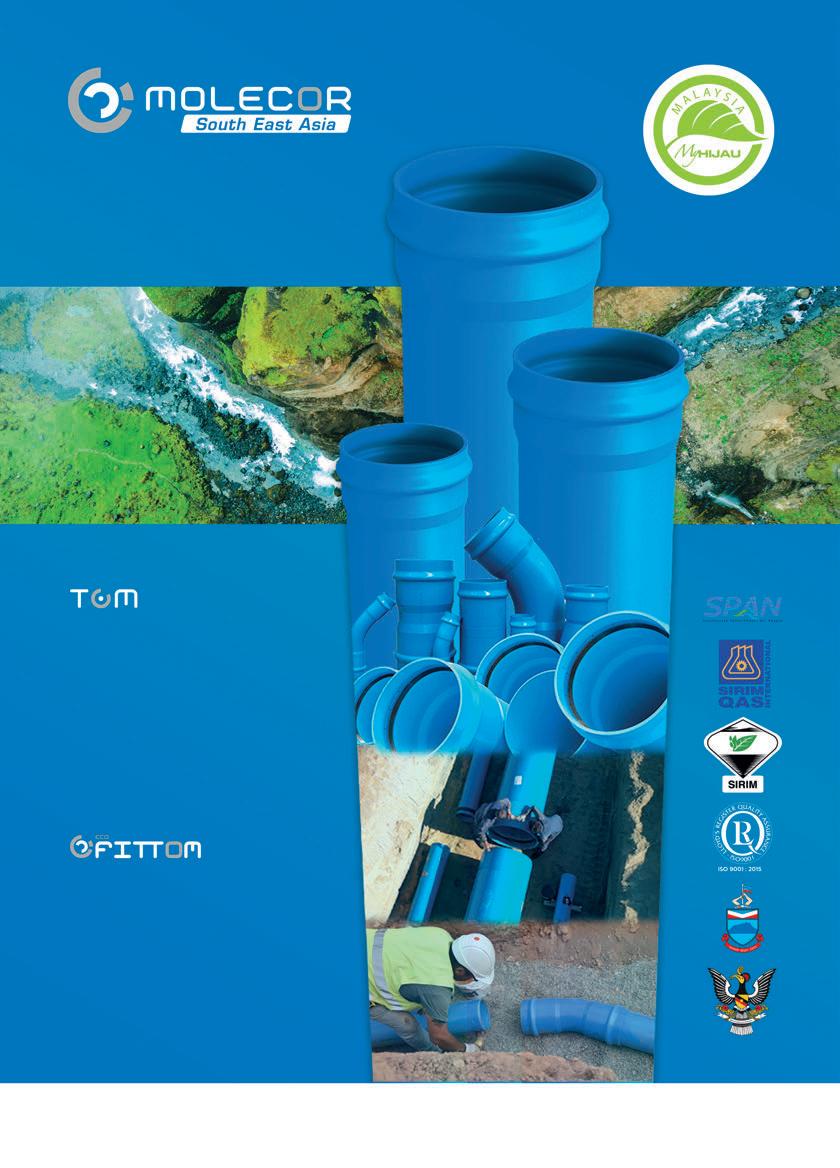


Prepared by:

Ir. Tay Siang Hui
The Chief Commercial Officer of Mikro MSC Bhd. has over 25 years of experience in electronics and electrical industry.


Ir. Alex Looi Tink Huey
General Manager of Malim Consulting Engineers, IEM Council Member, elected IEM ExComm and Secretary of EETD.
Committee member of EETD and Assistant Professor at Asia Pacific University of Technology & Innovation.
On June 25, 2024, the Malaysian Parliament achieved a historic milestone with the enactment of the Energy Efficiency & Conservation Act (EECA) 2024. Officially gazetted on January 1, 2025, the Act takes effect with full enforcement, heralding a new era in energy management by superseeding the Efficient Management of Electrical Energy Regulations (EMEER) 2008. Here, we explore the EECA 2024, its purpose, its impact on stakeholders and its critical role in driving Malaysia toward a sustainable energy future.
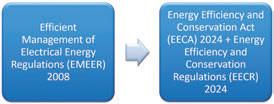
What is the Energy Efficiency and Conservation Act 2024?
The EECA 2024 is Malaysia’s most comprehensive legislation to date, targeting energy efficiency across both electrical and thermal energy systems. Crafted to confront the escalating challenges of climate change, this landmark Act reinforces the nation’s dedication to
reducing carbon emissions and driving energy efficiency across diverse sectors. Aligned with the National Energy Transition Roadmap (NETR) 2050 and Malaysia’s sustainability commitments under the Paris Agreement (COP21)1, the EECA 2024 sets a transformative path toward a greener and more energy-efficient future.
Unlike its predecessor, EMEER 2008, which exclusively centred on electricity, the EECA 2024 takes a more holistic approach by encompassing all major forms of energy. This shift marks a significant transition from focusing solely on kilowatt-hours (kWh) to the broader metric of gigajoules (GJ), reflecting the Act’s comprehensive vision for energy management. Its key objectives include:
• Comprehensive Energy Efficiency Legislation: Establishing a robust framework for energy efficiency initiatives nationwide.
• Carbon Emission Reduction: Supporting Malaysia’s pledge to reduce carbon emissions by 45% by 2030, relative to 2005 levels.
• Sector-Wide Energy Efficiency Improvements: Promoting efficient energy use in industrial, commercial and residential sectors.
• Support for Carbon Neutrality: Contributing to Malaysia’s aspiration of achieving carbon neutrality by 2050.
Energy efficiency is the cornerstone of effective energy management. Implementing energy efficiency measures before introducing energy conservation strategies is crucial, primarily because it reduces energy demand without compromising safety, quality of services, performance or comfort. Efficiency improvements ensure that systems operate securely and reliably while minimising waste and optimising energy use. Trying to solve the energy issue without addressing the efficiency issue first is like fixing the water source issue but neglecting a leaky water bucket.
Focusing on energy efficiency delivers substantial long-term cost savings (reducing operational expenses over time) and environmental benefits (mitigating carbon footprint while promoting sustainable practices). These measures provide immediate and measurable returns, reducing operational expenses while supporting sustainable practices, creating a solid foundation for conservation efforts and ensuring that subsequent measures are more effective and impactful.
Energy efficiency improvements increase the likelihood of success for conservation strategies by building confidence and acceptance among stakeholders. This encourages further investments in more ambitious initiatives and fosters a culture of sustainability. Often considered the “low-hanging fruit” of energy management, efficiency measures are relatively easy to implement and deliver significant benefits. Organisations can ensure that energy conservation strategies are sustainable, effective and seamlessly integrated into long-term energy optimisation efforts.
In Malaysia, approximately 28,867 industries are registered, but only about 1,200 (or 4.3%) will fall under the purview of the EECA 20242. This group accounts for a staggering 66% of the industrial sector’s total energy consumption. Addressing the energy use of this group is critical for achieving substantial energy efficiency gains and reducing overall consumption.
Similarly, within the commercial sector (including office buildings, hotels and hospitals), 0.04% of the 1.5 million consumers will be directly impacted by the EECA. This small fraction is responsible for 21% of the commercial sector’s total energy consumption 2
These figures highlight significant opportunities for transformative change. By targeting these highconsumption segments, Malaysia can unlock considerable energy savings, foster innovation in energyefficient practices and pave the way for a more sustainable future in both industrial and commercial sectors.
Affected by the EECA 2024
A. Owners & Consumers: Energy consumers whose energy consumption meets or exceeds a threshold of 21,600 gigajoules (GJ) (equivalent to 6,000,000 kWh) within any 12 consecutive months, are required to appoint a Registered Energy Manager (REM).
Note: This threshold applies to installations and persons 3. Energy consumers are required to appoint the REM within 3 months from the date of a written notice issued by the Energy Commission. Consumers with consumption between 21,600 GJ and 50,000 GJ (or 13,888,889 kWh) must appoint a first type REM. They may appoint the REM from among their employees. Energy consumers with consumption exceeding 50,000 GJ (equivalent to 13,888,889 kWh) must appoint a second type REM. For a period not exceeding three years from the date of notice, energy consumers may appoint a second type REM who is
not among their employees. After three years, energy consumers must appoint the REM from among their employees. The REM appointed may carry out their duties for a maximum of 7 other energy consumers, provided these are related corporations.
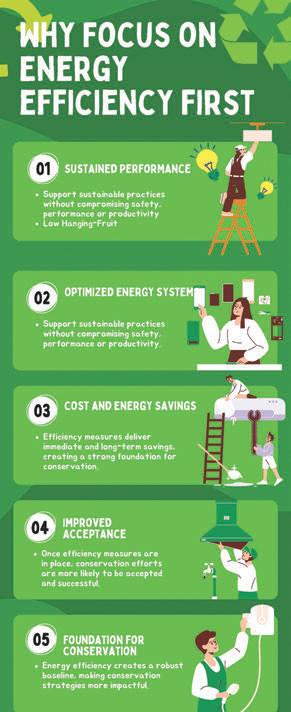
B. Buildings & Facility Managers: The person in charge of an office building with an area of 8,000 sq metres (86,111 sq ft) or more is required to apply for an energy intensity label from the Energy Commission annually.
The energy intensity label is a critical component of the EECA 2024, which ensures buildings are transparent about energy usage and that building managers are responsible for meeting energy efficiency standards. The label promotes continuous improvement in building energy performance by making compliance with minimum energy performance standards an annual obligation. This label must be displayed to comply with the EECA 2024’s regulations. It indicates the energy efficiency of the building and is valid for a period not exceeding one year and expires on the date specified on the label. Buildings issued with an energy intensity label must ensure their energy intensity performance is not lower than a two-star rating. Compliance with this rating must be met annually, starting from the fifth year after the first energy intensity label is issued. If the energy intensity performance of a building is lower than the two-star rating, the person in charge must conduct an energy audit (with the assistance of a Registered Energy Auditor, REA) and implement an energy efficiency improvement plan to comply with the EECA 2024.
C. Equipment Manufacturers & Importers: The EECA 2024 mandates that energy-using products must meet a Minimum Energy Performance Standard (MEPS), specifically not lower than a two-star rating. This applies to products made by manufacturers and importers. The “rating” refers to the energy efficiency rating of a product, as indicated by a star rating, according to guidelines issued by the Energy Commission.
Manufacturers and importers must obtain a Certificate of Energy Efficiency (COE) for their products. They need to apply for this certificate from the Energy Commission by providing the required documentation. The Energy Commission will then issue a COE and an energy efficiency rating label for the product, if approved 4. Products cannot be legally sold or distributed without this certification. If a product fails to meet the energy efficiency standards after receiving the certification, the manufacturer or importer must recall the non-compliant product from the market. This ensures consumers receive energy-efficient appliances, fostering a culture of sustainable consumption.
D. Registered Energy Professionals (Supporting Role): The REM and REA act as the supporting roles for owners and building managers. The EECA 2024 now categorises REMs into two types (first type and second type REM) and Registered Energy Auditors (REAs). Owners/consumers are required to appoint a first type REM if their consumption exceeds 21,600 GJ (but less than 50,000 GJ) within any period of 12 consecutive months. If the consumption exceeds 50,000 GJ within any period of 12 consecutive months, they will need to appoint a second type REM. REMs are pivotal in advising stakeholders, preparing energy efficiency reports and overseeing the implementation of energy management systems 5
E. Training Institution (Supporting Role): Training institutions play a critical role in the implementation of the EECA 2024, ensuring that a competent workforce of REMs is available to drive energy efficiency and conservation efforts. These institutions must meet stringent requirements to certify energy professionals, provide comprehensive training and adhere to ongoing compliance measures to maintain their registration as well as to contribute effectively to the objectives of the Act. Their role is vital in maintaining compliance and fostering a skilled talent pool to drive the nation’s energy agenda.
The EECA 2024 is a game-changer in Malaysia’s energy management landscape. By prioritising energy efficiency, it establishes a strong foundation for conservation efforts, reducing carbon emissions and operational costs while maintaining safety and performance. Its comprehensive framework empowers various stakeholders, including energy consumers, building managers, manufacturers and energy professionals, to drive a culture of sustainability. With collective compliance and effective implementation, Malaysia is poised to achieve its carbon neutrality aspirations, paving the way for a more energy-efficient and resilient future.
As we look ahead, the success of the EECA 2024 will hinge on collaboration, innovation, and an unwavering commitment to sustainability. Together, these efforts will not only shape the country’s energy landscape but also solidify its leadership in global sustainability initiatives. For more information on Energy Efficiency and Conservation Act (EECA) 2024, kindly visit: https://www.st.gov.my/eng/microsites/index/19/106




[1] Energy Commission of Malaysia. Objectives of the EECA 2024. https://www.st.gov.my/eng/ microsites/index/19/104. Accessed January 2025.
[2] The Edge Malaysia. Energy Efficiency and Conservation Act to be in force from Jan 1 next year. https://theedgemalaysia.com/node/734931. Accessed December 2024.
[3] Energy Commission of Malaysia. Energy Efficiency and Conservation Regulations 2024. Energy Commission of Malaysia; 2024.
[4] Energy Commission of Malaysia. Energy Efficiency and Conservation Act 2024. Energy Commission of Malaysia; 2024.
[5] Energy Commission of Malaysia. Guidelines and Guides under EECA 2024. https://www. st.gov.my/eng/microsites/index/19/108. Accessed January 2025.

















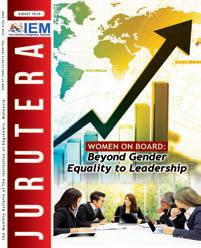







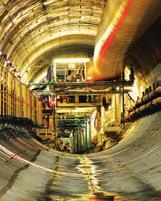




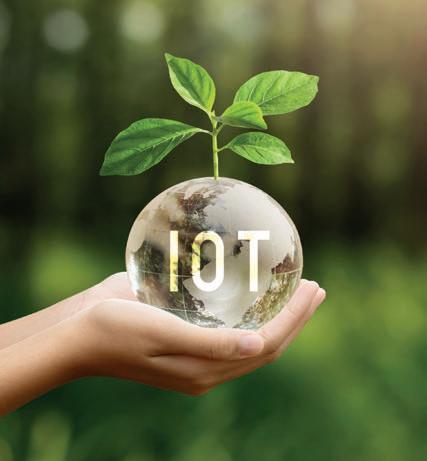








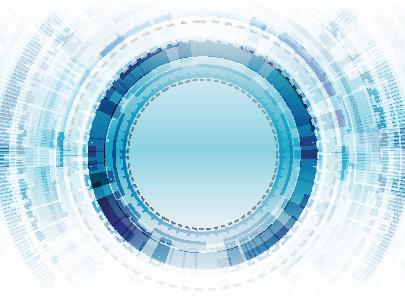




















Prepared by:


EUR ING Ts. Dr Lau Chee Yong
Committee member of EETD and Assistant Professor at Asia Pacific University of Technology & Innovation.
Alex Looi Tink Huey
General Manager of Malim Consulting Engineers, IEM Council Member, elected IEM ExComm and Secretary of EETD.
The National Energy Transition Roadmap (NETR) highlights 6 pivotal levers for driving economic growth and mitigating environmental impact: Energy Efficiency (EE), Renewable Energy (RE), Hydrogen, Bioenergy, Green Mobility and Carbon Capture, Utilisation and Storage (CCUS)1
Of these, EE is the most impactful, offering a cost-effective approach to resource optimisation. It provides sustainable, longterm solutions to reduce energy intensity and carbon emissions. It significantly enhances all aspects of the energy trilemma — improving energy security by curbing demand, promoting energy equity through cost reductions for users and advancing environmental sustainability by minimising emissions during energy production. As a cornerstone of the NETR, EE is a practical yet transformative pathway to a greener and more resilient future.
In 2015, the government introduced the National Energy Efficiency Action Plan (NEEAP), a visionary 10-year strategy aimed at enhancing energy efficiency across the residential, commercial and industrial sectors. Its primary goal was to promote the productive use of energy, reduce waste and contribute to sustainable development while boosting national welfare and competitiveness.
The NEEAP was built upon 4 key thrusts: Implementing targeted energy efficiency initiatives, strengthening institutional frameworks through capacity building and training, establishing sustainable funding mechanisms for energy efficiency programmes and encouraging private sector investment2. Looking ahead, NEEAP 2.0 is currently being drafted as a continuation of these efforts, aligning with the objectives of the NETR. This enhanced framework promises to unlock greater job opportunities, stimulate business growth and attract investments, ultimately driving Malaysia toward a more sustainable and prosperous energy future 3 .
Energy Service Companies (ESCOs) have emerged as critical enablers in our journey towards energy efficiency and sustainability. As the nation grapples with increasing energy demands and environmental concerns, ESCOs
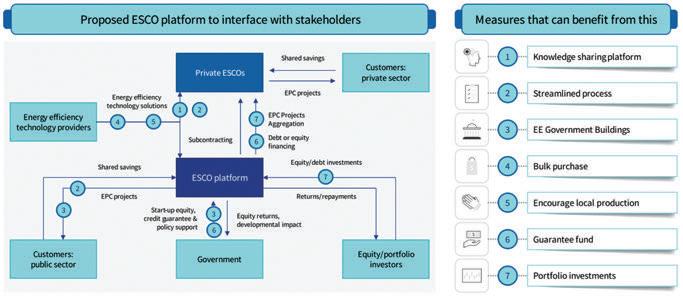
provide specialised expertise in identifying, implementing and financing energy efficiency projects across various sectors. Their role has become increasingly significant as Malaysia aims to achieve its ambitious target of 23% energy efficiency in industrial and commercial sectors by 2050, as outlined in the NETR1
The current state of Malaysia’s ESCO market reflects both promise and potential. While the sector has shown steady growth over the past decade, it still operates below its full potential. According to the NETR, ESCOs face several challenges, including limited access to financing, complex contractual arrangements and varying levels of technical expertise. However, these challenges are balanced by growing opportunities as organisations increasingly recognise the economic and environmental benefits of EE initiatives.
The importance of ESCOs in the energy landscape cannot be overstated. They serve as bridges between technical solutions and financial viability, helping organisations overcome the initial barriers in implementing EE measures. Through performance contracts and innovative financing models, ESCOs enable clients to achieve energy savings without significant upfront capital investment. This approach is particularly crucial for small and medium enterprises (SMEs) which may lack the resources for large-scale EE improvements.
As Malaysia moves forward with its energy transition goals, the development of a robust ESCO ecosystem becomes increasingly crucial. Understanding the financial models and energy contracts that underpin successful ESCO operations is essential for stakeholders across the EE value chain, from policy makers and financial institutions to building owners and facility managers.
The NETR introduces a transformative approach to Malaysia’s EE landscape through the establishment of an integrated ESCO platform. This framework represents a significant step forward in organising and streamlining the nation’s EE initiatives, particularly in coordinating efforts between public and private sectors.
At its core, the ESCO platform functions as a centralised intermediary that connects private ESCOs with government retrofit projects. This approach addresses one of the primary challenges in the market: The fragmentation of EE projects and the resulting high transaction costs. The platform is designed to aggregate multiple smaller projects into viable portfolios, creating economies of scale that make these initiatives more attractive to both ESCOs and financial institutions.
The platform structure incorporates several key operational elements. Through the establishment of standardised processes and protocols, it ensures consistent quality in project implementation and performance measurement. This standardisation is crucial for building confidence among stakeholders, particularly financial institutions which may be hesitant to fund EE projects due to perceived risks.
A significant feature of the platform is its role in public building retrofits. The initiative targets government buildings as a starting point, with an ambitious programme to improve EE across public sector facilities. This approach serves multiple purposes: It demonstrates government commitment to EE, creates a substantial initial market for ESCOs and provides valuable case studies for the private sector.
The financial mechanism within the platform is particularly innovative. It incorporates a revolving fund to help address one of the most significant barriers in the ESCO market – access to financing. The fund is designed to be selfsustaining, with energy cost savings from completed projects being reinvested into new initiatives. This approach helps reduce dependence on continuous government funding while ensuring a steady flow of capital for new projects.




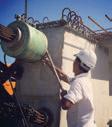
Nehemiah-OVM provides the following products and services:
- Post-tensioning solution provider
- Carpark Flat Slab
- Transfer Plate
- Beams, Box Girders
- Alternative design solutions
- Cable systems (stay cable main cable hanger)
- Bridge bearing and expansion joint
- Construction solutions (heavy lifting, ILM, etc)
- Monitoring, repairing and strengthening for structures




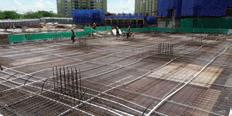
The Strand, Kota Damansara 47810 Petaling Jaya Selangor Darul Ehsan
Tel : 603-61426638
Fax : 603-61426693

Email : enquiry-pt@nehemiah-grp.com

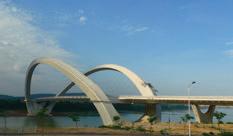
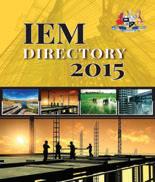
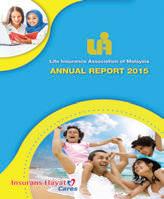



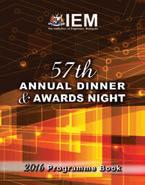



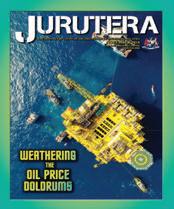
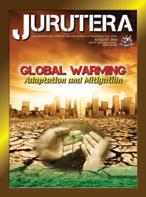

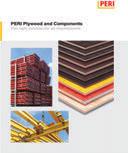






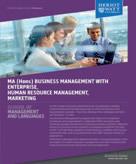
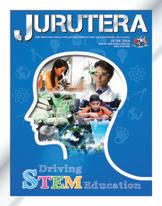






















The platform also facilitates knowledge sharing and capacity building among stakeholders. By creating a centralised hub for EE projects, it enables the collection and analysis of performance data, sharing of best practices and development of industry standards. This aspect is crucial for the long-term development of Malaysia’s ESCO market, as it helps build expertise and confidence in EE solutions.
Through this comprehensive framework, the ESCO platform aims to catalyse Malaysia’s EE market, making it more accessible, efficient and attractive to all stakeholders. It represents a crucial step in achieving the nation’s EE targets while creating new opportunities for economic growth in the green technology sector.
The success of ESCO projects fundamentally depends on the availability and implementation of innovative and sustainable financial models. These models must address the unique challenges of EE projects while providing attractive returns for all stakeholders involved. The NETR outlines several key financing mechanisms that form the backbone of Malaysia’s ESCO ecosystem.
Central to these financial mechanisms is the National Energy Transition Facility (NETF), established with an initial seed funding of RM2 billion. The NETF serves as a catalytic funding source, addressing one of the most significant barriers in the ESCO market – the high upfront costs of EE projects1. Through this facility, various financial instruments are made available, including direct project financing, credit guarantees and interest rate subsidies. These instruments are designed to make EE projects more financially viable while reducing the risks for both ESCOs and their clients.
The revolving fund mechanism stands out as a particularly innovative aspect of the ESCO platform’s financial structure. This sustainable funding model operates by capturing and reinvesting energy cost savings from completed projects into new initiatives. As projects generate verified energy savings and subsequent cost reductions, a portion of these savings is channelled back into the fund, creating a self-sustaining cycle of investment in EE. This approach reduces dependence on external funding sources while ensuring a continuous flow of capital for new projects.
Risk mitigation plays a crucial role in the financial framework. The platform incorporates various measures to address the concerns of different stakeholders. Performance guarantees ensure that promised energy savings are achieved, while insurance products protect against technical and operational risks. Payment security mechanisms help build confidence among financial institutions, making them more willing to provide funding for ESCO projects.
Commercial banks and financial institutions are encouraged to participate through various incentives and support mechanisms. The government provides partial risk guarantees and technical assistance grants to help financial institutions develop expertise in evaluating and funding EE projects. This support helps build capacity within the financial sector while expanding the available funding sources for ESCO projects.
Special attention is given to measurement and verification protocols within the financial structure. Clear and standardised methods for measuring energy savings are essential for the success of these financial models as they provide the basis for determining returns and verifying the effectiveness of investments. These protocols help build trust among stakeholders and ensure the transparency of financial arrangements.
Through these comprehensive financial models, the ESCO platform aims to create a robust and sustainable market for EE projects in Malaysia. The combination of government support, innovative funding mechanisms and risk mitigation strategies helps overcome traditional barriers to EE investments while creating attractive opportunities for all stakeholders involved.











Energy Performance Contracts (EPCs) form the cornerstone of ESCO operations in Malaysia, providing the legal and financial framework that underpins successful energy efficiency projects. These contracts establish the relationship between ESCOs and their clients, defining responsibilities, risk allocation and the mechanisms for sharing benefits from energy savings. The structure and implementation of EPCs are crucial factors in determining the success of EE initiatives.
The Malaysian ESCO market primarily operates with two dominant EPC models: Guaranteed Savings Model (GSM) and Shared Savings Model (SSM) 4. Each model offers distinct advantages and is suited to different project circumstances and client needs. Under the GSM, the ESCO provides a guarantee of specific energy savings to be achieved through the project. The client secures the project financing, while the ESCO assumes the performance risk. This model is particularly attractive to clients with strong credit ratings and access to favourable financing terms, as they can leverage their financial strength while benefiting from the technical expertise of the ESCO.
In contrast, under the SSM, the ESCO takes responsibility for securing project financing. The energy cost savings are then shared between the ESCO and the client according to a pre-agreed ratio. This model is particularly beneficial for clients who may have limited access to capital or prefer to avoid taking on additional debt. The sharing ratios can be structured flexibly to reflect the level of risk and investment undertaken by each party.
A critical component of any EPC is the baseline energy consumption measurement. This baseline serves as the reference point against which future energy savings are measured and verified. The contract must clearly define the methodology for establishing this baseline, including adjustments for variables such as weather conditions, occupancy rates or production levels that might affect energy consumption.
Measurement and verification protocols constitute another essential element of EPCs. These protocols must be robust and transparent, providing both parties with
confidence in the reported energy savings. The contract typically specifies the frequency of measurements, the methods to be used and the procedures for resolving any dispute about measured savings. The International Performance Measurement & Verification Protocol (IPMVP) often serves as a reference standard for these procedures.
Risk allocation is carefully structured within EPCs to ensure fair distribution between parties. Technical risks, such as the performance of installed equipment, typically rest with the ESCO, while operational risks might be shared with or allocated to the client. Financial risks, including energy price fluctuations or changes in facility usage, must be clearly addressed in the contract terms.
The duration of EPCs typically ranges from 5 to 10 years, depending on the project scope and expected payback period. The contract must include provisions for early termination, equipment maintenance responsibilities and the transfer of assets at the end of the contract period. Additionally, the contract should address contingencies such as changes in facility ownership or usage, ensuring continuity of the energy efficiency measures.
Performance guarantees and payment mechanisms are detailed within the EPC, providing clarity on how savings will be verified and compensation determined. These mechanisms might include periodic true-up calculations, bonus provisions for exceeding targets or penalties for underperformance. The contract should also specify dispute resolution procedures and include provisions for regular review and adjustment of performance targets if necessary.
The Malaysian government has implemented a comprehensive framework of initiatives and support mechanisms to nurture and strengthen the ESCO ecosystem. At the forefront of these initiatives is the Energy Efficiency & Conservation Act (EECA) 2024, which provides the legislative backbone for EE efforts across the nation. This landmark legislation introduces mandatory energy audits for large energy consumers, establishes minimum energy performance standards and creates a structured framework for EE reporting and compliance.
Financial incentives form a crucial component of government support for the ESCO sector. Through various agencies, the government offers tax benefits for EE investments, including tax exemptions for qualifying equipment and accelerated capital allowances for energy-efficient technologies. The Green Technology Financing Scheme (GTFS) offers attractive incentives for fostering sustainable initiatives. Through this scheme, the government provides a 1.5% annual rebate on interest fees for loans extended by financial institutions, applicable to the first 7 years of the loan. This benefit is available to green technology producers, such as RE generators, green technology adopters and EE-related projects, encouraging widespread adoption of eco-friendly practices and innovations5
Grant programmes have been established to support energy audits such as the Energy Audit Conditional Grant (EACG) 2.0, particularly benefitting SMEs which may otherwise find such assessments cost prohibitive6
The EACG 2.0 supports the commercial and industrial sectors to collaborate with ESCOs to conduct energy audit in their buildings.
Capacity building represents another critical area of government support. Through collaboration with educational institutions and industry bodies, comprehensive training programmes have been developed to enhance the technical expertise of energy professionals. Certification programmes ensure that ESCOs meet required standards of competency, while knowledge-sharing platforms facilitate the exchange of best practices and lessons learnt. International collaboration initiatives bring global expertise to the Malaysian market, helping to accelerate the adoption of proven EE solutions.
These comprehensive support mechanisms demonstrate the government’s commitment to developing a robust ESCO ecosystem. By providing legislative support, financial incentives, regulatory oversight and capacity-building programmes, it creates an enabling environment for ESCOs to thrive while contributing to national EE goals.
The ESCO ecosystem in Malaysia faces several significant challenges while simultaneously presenting substantial opportunities for growth and development. Understanding these challenges and opportunities is crucial for stakeholders to effectively navigate the evolving energy efficiency landscape.
One of the primary challenges facing the ESCO sector is market awareness and acceptance. Many potential clients, particularly in the private sector, remain unfamiliar with the ESCO concept and the benefits of EE investments. This knowledge gap often results in hesitation to engage with ESCOs or to commit to longterm energy performance contracts. Additionally, high
transaction costs, especially for smaller projects, can make EE initiatives less attractive to potential clients.
Technical complexity presents another significant challenge. EE projects often require specialised expertise and sophisticated measurement and verification protocols. Limited local technical capacity and the need for continuous professional development can constrain market growth. Furthermore, the ability to accurately measure and verify energy savings remains a critical challenge that affects project credibility and financial returns.
However, these challenges are balanced by significant opportunities in the sector. Growing environmental awareness and rising energy costs are driving increased interest in EE solutions. The government’s commitment to energy transition, exemplified through the NETR, creates a supportive policy environment for ESCO development.
Technological advancements present exciting opportunities for the sector. The integration of digital technologies, including Internet of Things (IoT) devices, artificial intelligence and advanced analytics, enables more sophisticated energy management solutions. These technologies enhance the ability to monitor, control and optimise energy consumption, making EE projects more effective and valuable to clients.
Financial innovation also presents opportunities for market growth. The development of new financing mechanisms, including green bonds and sustainability-linked loans, expands funding options for EE projects. The increasing focus on environmental, social and governance (ESG) criteria by investors and financial institutions, creates additional momentum for ESCO market development.
The Malaysian ESCO ecosystem stands at a pivotal juncture in its development. The comprehensive framework established through the NETR, coupled with strong government support and innovative financial mechanisms, provides a solid foundation for market growth. The introduction of the centralised ESCO platform is a significant step forward in addressing key market barriers and facilitating project implementation.
Success in the evolving landscape requires continued collaboration among all stakeholders. As the market matures, emphasis must be placed on standardising processes, expanding financing options and building technical capacity. With sustained commitment from both public and private sectors, our ESCO ecosystem is wellpositioned to play a crucial role in achieving the nation’s EE and sustainability goals.
Looking ahead, the sector’s growth will be driven by technological innovation, increasing environmental awareness and the pressing need for energy cost optimisation. Through collective effort and dedication to sustainable development, the ESCO industry can contribute significantly to the transition toward a more energy efficient and environmentally conscious future.

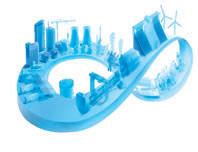










[1] Ministry of Economy. National Energy Transition Roadmap: Energising the nation, powering our future. Ministry of Economy; 2023.
[2] Ministry of Energy, Green Technology and Water. National Energy Efficiency Action Plan. Ministry of Energy, Green Technology and Water; 2015.
[3] Malaysia Investment Development Authority (MIDA). Fadillah: PETRA, EC developing NEEAP 2.0 to boost job opportunities, business potential and investments. https://www. mida.gov.my/mida-news/fadillah-petra-ec-developing-neeap-2-0-to-boost-job-opportunitiesbusiness-potential-and-investments/. Accessed December 2024.
[4] Mohamad Munir, Z.H.; Ahmad Ludin, N.; Junedi, M.M.; Ahmad Affandi, N.A.; Ibrahim, M.A.; Mat Teridi, M.A. A rational plan of energy performance contracting in an educational building: a case study. https://doi.org/10.3390/su15021430. Sustainability 2023, 15, 1430; January 2023.
[5] Sustainable Energy Development Authority (SEDA) Malaysia. Malaysia Renewable Energy Roadmap: pathway towards low carbon energy system. Sustainable Energy Development Authority (SEDA) Malaysia; 2021.







[6] Sustainable Energy Development Authority (SEDA) Malaysia. Energy audit conditional grant – commercial & industry. https://www.seda.gov.my/energy-demand-management-edm/ energy-audit-conditional-grant-commercial-building/. Accessed December 2024.
A notice inviting nominations for the Election of Council Members for Session 2025/2026 was posted on the IEM Notice Board and IEM website on 1 November 2024 for the information of all Corporate Members. Following the close of nominations on 7 December 2024, the election exercise will proceed. All Corporate Members residing overseas are requested to take note of the requirements of the Bylaw, Section 5.17, as shown below.
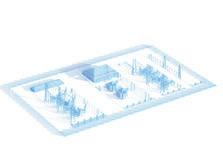
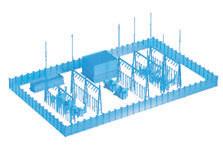
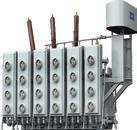




The voting paper (in hardcopy or electronic form) shall, not less than twenty-eight (28) clear days before the date of the Annual General Meeting, be sent by post or in electronic mail or message to all Corporate Members. The voting paper (in hardcopy or electronic form) shall be returned or submitted online and in turn notified to the Honorary Secretary in a sealed envelope or electronically encrypted format so as to reach him by a specified date not less than seven (7) days before the Annual General Meeting.
Electronic Ballot had been sent out to all Corporate Members via email and SMS on 22 February 2025 and the closing date will be on 24 March 2025
Thank you.
Election Officer, IEM

CIRCULAR – PROTECTION OF IEM CREST AND LOGO
Members are reminded that the IEM Crest and logo are duly registered under the Trade Marks Act 1976 and the Trade Marks Regulations 1997. The new Trademarks Act 2019 now governs the rights of the proprietors of such registered trademarks and imposes sanctions for infringement. In accordance with Section 54 of the Trademarks Act 2019, the following actions, inter alia, constitute an infringement of a registered trademark:
• use of a sign identical with or similar to a registered trademark
• use of the sign in relation to identical or similar to goods and/or services for which the trademark is registered





• use of the sign in the course of trade.
• use of the sign without the consent of the registered proprietor
In view of the above, IEM would like to caution members that any unauthorised use of the IEM crest and logo in any manner, including on social media platforms such as Facebook, LinkedIn, Instagram, Telegram and others is strictly prohibited. Stern actions will be taken against members found infringing the IEM crest and logo which include expulsion (refer to Clause 3.15 of the IEM Constitution and Bylaws) and/or appropriate legal measures.
Thank you.
IEM Hon. Secretary

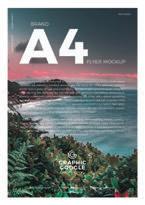


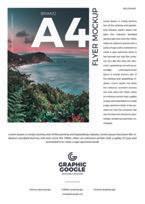



Annual Reports • Booklets • Brochures • Buntings • Business Cards
CD / DVD Replications • Calendars • Cards & Invitations • Certificates
Custom Printings • Envelopes • Folders • NCR Bill Books • Notepads
Leaflets • Letterheads • Paper Bags • Posters • Stickers • Others


Prepared by:

Ir. Ts. Zahari Dollah
Head of Asset Management Department, Distribution Network, TNB

Ir. Komal Deep Kaur
Principle Engineer (Grid Modernisation)
Asset Management Department, Distribution Network, TNB

Ts. Nursyahira Sharif
Senior Engineer (Emerging Technologies)
Asset Management Department, Distribution Network, TNB

Senior Engineer (Asset Information)
Asset Management Department, Distribution Network, TNB
In today’s electrified and interconnected world, energy management plays a crucial role in ensuring exceptional customer experiences. At Tenaga Nasional Berhad (TNB), balancing growing energy demands with innovative solutions reflects its unwavering commitment to reliable, sustainable and customer-focused service. TNB’s Distribution Network Division has taken the lead with cutting-edge initiatives to address modern challenges, including rising electricity demand, urbanisation and the impacts of external factors such as climate change.
Maintaining a secure and reliable electricity supply requires a combination of robust infrastructure, advanced technology and proactive management. TNB ensures this by modernising its grid to meet increasing demand, incorporating smart grid technologies for real-time monitoring and predictive maintenance as well as integrating energy storage systems to balance supply fluctuations. TNB also emphasises grid resilience through redundancy, disaster preparedness and the adoption of microgrids for localised reliability. By seamlessly integrating renewable energy sources and implementing customer-centric energy solutions, the TNB Distribution Network not only addresses hidden loads from rooftop solar systems and urban growth but also upholds its commitment to sustainability and uninterrupted service for all customers.
The Challenge: Rising Energy Demands & Network Resilience
The increase in energy consumption across Malaysia has presented significant challenges to ensuring seamless and reliable electricity distribution. The growing demand has highlighted opportunities for improvement, contributing to a rise in power disruptions between 2023 and 2024. This highlights the need for improved strategies to prevent service interruptions and to enhance efficiency.
Several key factors drive these trends:
1. Festive Season Peaks: During major holidays such as Hari Raya, the balik kampung phenomenon leads to a sharp increase in electricity demand, particularly in rural areas. This surge challenges the grid capacity to manage power supply, requiring real-time adjustments and temporary measures.
2. Rapid Urbanisation: The expanding residential and industrial developments in urban hubs like Selangor and Johor reflect vibrant growth, underlining the need to enhance and strengthen the infrastructure to meet rising demands. To meet demand, infrastructure must be continuously upgraded, including substations, conductor lines and load distribution systems.
3. Climate Change Effects: Extreme weather patterns, such as heatwave caused by El Niño, lead to higher energy consumption for cooling, especially in urban
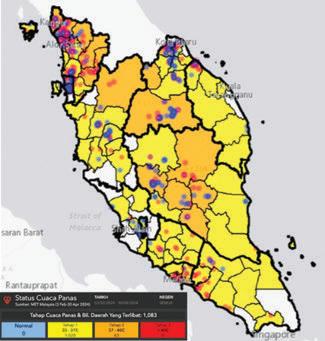
Figure 1: The heatmap overlay of Tahap Suhu Panas (Heat Level) with power disruptions indicates that states prone to climate change, including Kedah, Perlis, Pahang, Perak, Kelantan and Terengganu, are experiencing power disruptions due to the extreme heat impacts driven by El Niño.
The manual data input for Tahap Cuaca Panas (Heat Level) for districts in Peninsular Malaysia, covering the period from February 3 to April 30, 2024, is sourced from the Jabatan Meteorologi Malaysia (Malaysian Meteorological Department) website
areas. This creates additional stress on the grid, as enhanced infrastructure resilience and energy efficiency measures are required to cope with such fluctuations.
4. Hidden Loads from Rooftop Solar Customers: While rooftop solar systems have reduced daytime reliance on the grid, they contribute to hidden loads at night when solar generation ceases, shifting energy demand back to the grid. This trend is particularly significant in residential areas, adding complexity to network management during peak evening hours. These factors highlight the importance of proactive planning and innovative strategies to maintain a resilient and future-proof grid, ensuring reliability for all customers.
Proactive Solutions to Manage Energy Better
TNB has stepped up with a series of transformative initiatives to improve energy management, enhance customer experiences and make the grid more resilient. These include:
1. Enhanced Visibility with Advanced Technology: TNB is transitioning from periodic manual monitoring to real-time load tracking. Technologies such as Online Feeder Pillars (OFPs), which provide 15-minute loading data, real-time power disruption and restoration triggers from Smart Meters, and Geographic Information Systems (GIS) data lay the foundation for connecting customer meters to the source of supply, offering comprehensive visibility into the distribution network. This allows TNB to have full visibility into load demand for future predictions, facilitating accurate demand forecasting, faster identification of network stress points and more efficient grid performance management.
2. Predictive Modelling for Grid Reliability: Leveraging data from GIS, OFPs and Smart Meters, TNB has adopted a proactive approach by creating predictive models to anticipate and address potential demand spikes. These models help identify areas at risk, enabling targeted interventions and preventative actions before issues arise, ensuring a more efficient and reliable distribution network.
3. Strategic Solutions in Key Areas: TNB is piloting initiatives in high-impact areas such as Klang and Kelantan, focusing on proactive maintenance and asset replacement. Replacing ageing infrastructure with modern equipment in areas with high demand strengthens reliability and minimises disruptions.
4. Integration of Distributed Energy Resources (DER): Recognising the increase in rooftop solar panels and electric vehicles (EVs), TNB is incorporating DER into its predictive models. These efforts are particularly crucial in managing hidden loads from solar customers, especially during the night when solar power generation ceases, and customers rely on the grid.
All TNB initiatives are rooted in a customer-centric philosophy, striving to provide seamless, reliable and efficient energy services. The benefits include:
1. Improved Network Reliability: Proactive measures have significantly alleviated network stress points, ensuring a more reliable and consistent service for customers while minimising disruptions.
2. Faster Power Restoration: Through predictive models and real-time data, TNB has reduced the average time taken to resolve power interruptions, enabling faster resolutions and minimising inconvenience.
3. Sustainability for a Greener Future: By optimising energy management, TNB has reduced greenhouse gas emissions, contributing to Malaysia’s sustainability goals.
4. Empowering Customers with Data: Real-time insights and smarter energy solutions help customers make informed choices, encouraging energy efficiency and cost savings at household levels.
TNB is actively scaling its innovations to achieve nationwide impact, ensuring the energy grid is prepared to handle future challenges.
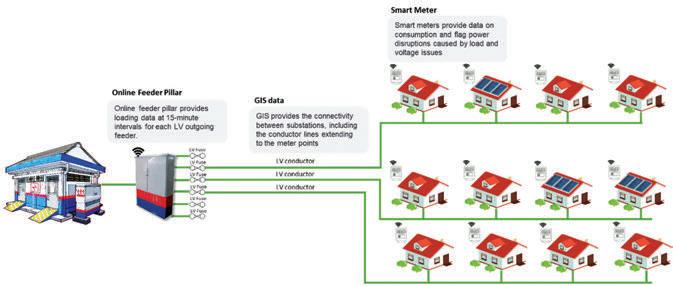
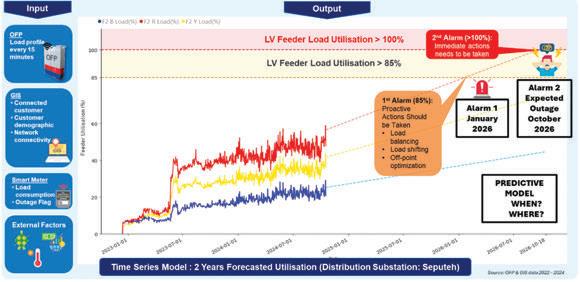
• Refined Predictive Models: By incorporating factors such as EV adoption, weather patterns and economic trends, TNB is enhancing its ability to anticipate and address network challenges. Leveraging AI and machine learning, these predictive models analyse vast data sets in real time to forecast demand spikes, identify potential faults and optimise resource allocation. This advanced approach allows TNB to stay ahead of disruptions, ensuring a more resilient and reliable electricity supply for its customers.
• Modernising Infrastructure with OFPs: Upgrading feeder pillars to online feeder pillars enhances realtime monitoring, ensuring robust and reliable service delivery. The integration with an IoT platform enables seamless data transfer to predictive solutions, further optimising network performance and reliability.
• Nationwide Expansion of Smart Meters: Expanding the deployment of smart meters across the country improves service reliability and operational efficiency. Smart meters play a crucial role in leveraging digital
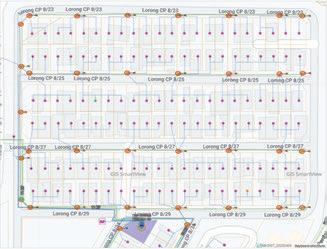
technology to manage electricity usage more efficiently for customers. This transformation allows TNB to enhance customer experience and services, gain better control over the grid and optimise energy consumption.
• Nationwide GIS LV Network Visibility: TNB recognises the critical role that GIS plays in understanding and managing electricity networks. Scaling GIS capabilities across the nation will provide comprehensive visibility of the grid, enabling faster identification of highdemand areas and ensuring smoother coordination for preventive measures. Nationwide implementation of GIS will be key to creating a robust, data-driven grid capable of meeting the needs of Malaysia’s growing population and economy.
Conclusion: Proactive Solutions for a Sustainable Future
TNB is addressing growing energy demands with innovative initiatives to ensure reliable, sustainable and customer-focused service. Key challenges include rising consumption, urbanisation, climate change and the integration of Distributed Energy Resources (DER), such as rooftop solar systems and electric vehicles. TNB’s proactive solutions include real-time load tracking with OFPs, nationwide Smart Meters and GIS connectivity data deployment, providing full visibility for improved demand forecasting, predictive models for grid reliability and strategic infrastructure upgrades. These efforts enhance network reliability, reduce power restoration times and promote energy efficiency.
[1] TNB Smart Grid Initiatives https://www.tnb.com.my/smart-grid//
[2] Geographic Information System https://www.tnb.com.my/residential/gis/
[3] Smart Meters https://www.tnb.com.my/residential/smartmeters/
[4] Tahap Cuaca Panas (Heat Level) for districts in Peninsular Malaysia, covering the period from 3 February to 30 April 2024 https://www. met.gov.my/




Prepared by:

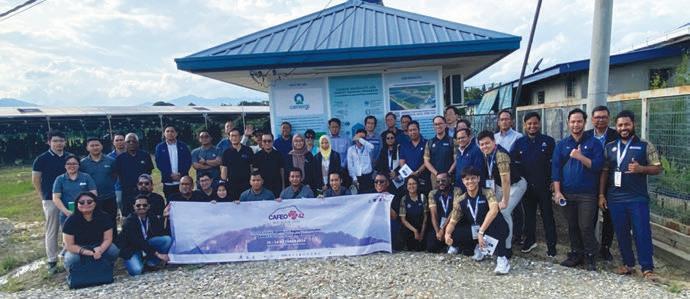
The ASEAN Federation of Engineering Organisations (AFEO), with IEM Electrical Engineering Technical Division (EETD) and IEM Sabah Branch, showcased Malaysia’s commitment to renewable energy (RE) with the AFEO Energy Tour 2024 on 23 October 2024. It highlighted two RE installations which exemplified Malaysia’s progress toward its sustainable energy goals. This aligned with our target to achieve 31% RE share in the national installed capacity mix by 2025 and 40% by 2035. The tour centred on Keningau, near Kota Kinabalu, and showed how agricultural land could successfully integrate with modern RE infrastructure.
With Malaysia positioned as a key player in regional green energy development, the tour highlighted the critical intersection of digital transformation and sustainable energy production, showcasing how smart engineering solutions were revolutionising the power generation sector.
The digital transformation of energy infrastructure represented a crucial step toward achieving ASEAN’s sustainability goals. Smart engineering applications illustrated how technology could optimise energy production, reduce wastage and improve grid stability.
From 7.30 a.m. participants explored solar and biogas power generation facilities at the Sabah International Convention Centre. Then we went to the 2000kWe Palm Oil Mill Effluent (POME)-Biogas Power Plant in Keningau. After lunch at the Kim Loong Biogas Plant, we went to Cenergi Agrivoltaic Solar Farm. The tour ended at 6.45 p.m.
Agrivoltaic Solar Farm
One major highlight was the visit to Cenergi SEA Bhd’s 1000kWp ground-mount agrivoltaic solar farm in Keningau which demonstrated the successful integration of RE generation with agricultural activities.

EECA Infographic
1. EE Requirements & Action List for Stakeholders
2. Energy Consumers Affected
3. NETR & EECA Stakeholder Framework
Solar panels mounted on elevated structures allowed agricultural activities such as pineapple cultivation on the ground, creating a dual-use system to maximise land productivity. This not only generated clean energy but also provided shade for the crops, reducing water evaporation and creating favourable growing conditions.
Technical experts from Cenergi SEA Bhd provided details on the system, including the grid interconnection infrastructure. The design incorporated advanced monitoring systems that optimised both energy generation and agricultural yield. The average daily generation capacity was impressive, contributing significantly to the local grid while supporting sustainable farming practices.
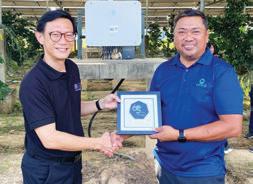
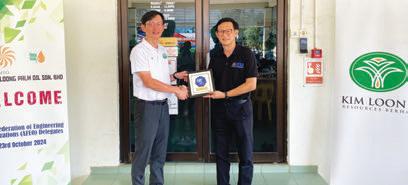
The impact on the community was also noteworthy, creating jobs for local residents while providing farmers with additional income. This proved especially valuable in gaining local support for RE initiatives.
The afternoon session focused on Kim Loong Resources’ 2000kWe POME-Biogas Power Plant, which addressed waste management and RE generation in the palm oil industry. It demonstrated how POME could be converted into a valuable energy resource while reducing environmental impact.
The anaerobic digestion system processed POME to generate biogas used for electricity generation. We observed the complete process flow, from the initial effluent treatment to the final power generation stage. The methane capture system was particularly impressive, demonstrating high efficiency in converting waste gases into usable energy.
We learnt how the grid interconnection system operated to feed excess power back into the national grid. The environmental impact was substantial, with significant reductions in greenhouse gas emissions compared to traditional methods.
The facility also incorporated innovative Bio Compressed Natural Gas (BioCNG) production capabilities and demonstrated how processed biogas could be further refined into a high-quality fuel source for industrial applications or as a replacement for conventional natural gas. It could process large volumes of POME while maintaining consistent power generation and meeting all environmental compliance requirements.
The visits highlighted the practical implementation of Malaysia’s RE goals and the potential for similar projects in ASEAN. The integration of digital monitoring systems and smart controls showed how modern technology could enhance the efficiency and reliability of RE installations. Smart grid integration was a key feature at both facilities, with real-time monitoring systems providing detailed performance data.
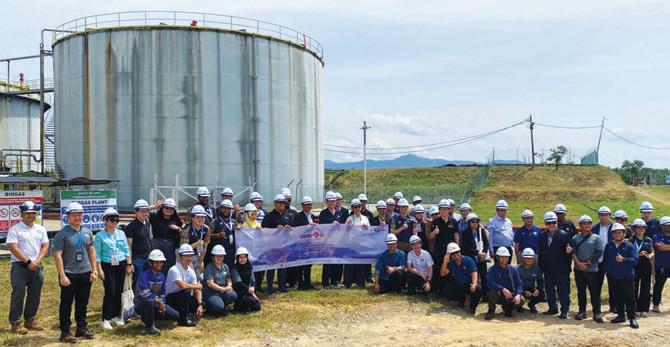

Sustainable practices were highlighted at both sites, including predictive maintenance protocols and automated cleaning systems for the solar panels. The facilities demonstrated how digitalisation enhanced operational efficiency while reducing maintenance costs. Both installations featured state-of-the-art SCADA systems which enabled remote monitoring and control.
The participants engaged in technical discussions, sharing experiences and insights from their respective countries. The event strengthened regional ties in the RE sector and established new channels for cooperation, laying the groundwork for cross-border partnerships. Several organisations expressed interest in replicating similar projects in their home countries.
The economic impact proved substantial. The agrivoltaic solar farm created 30 permanent jobs while supporting local agricultural activities. The POME-biogas plant employed 25 skilled workers and significantly reduced waste management costs for the palm oil industry. Both showed strong returns on investment while contributing to local economic development.
Environmental benefits were equally impressive. The solar farm’s annual carbon dioxide emission reduction was estimated at 1,200 metric tons, while the biogas plant prevented the release of approximately 50,000 metric tons of carbon dioxide equivalent annually through methane capture and utilisation.
The organisers, Ir. Kwok Yew Hoe and Ir. Alex Looi Tink Huey, were satisfied with the outcomes. Ir. Kwok said: “The AFEO Energy Tour 2024 represents a significant milestone in sustainable energy in the ASEAN region. What makes it meaningful is the combination of two distinct RE technologies. The agrivoltaic solar farm and the POME-biogas facility demonstrates Sabah and Malaysia’s comprehensive approach to green energy solutions.”

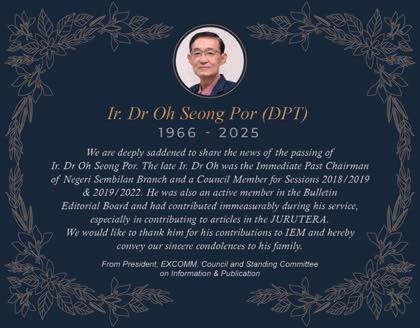

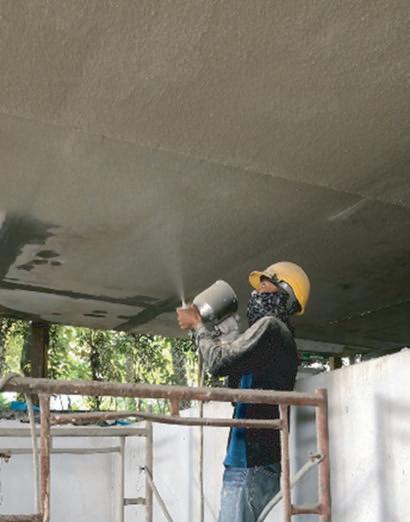
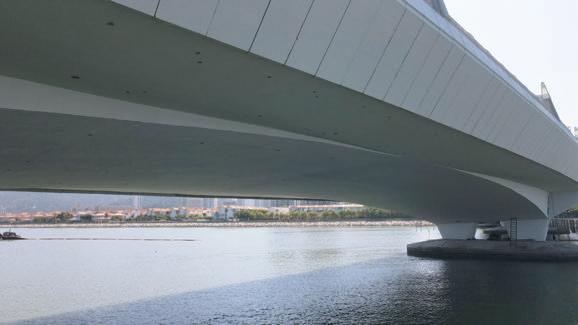
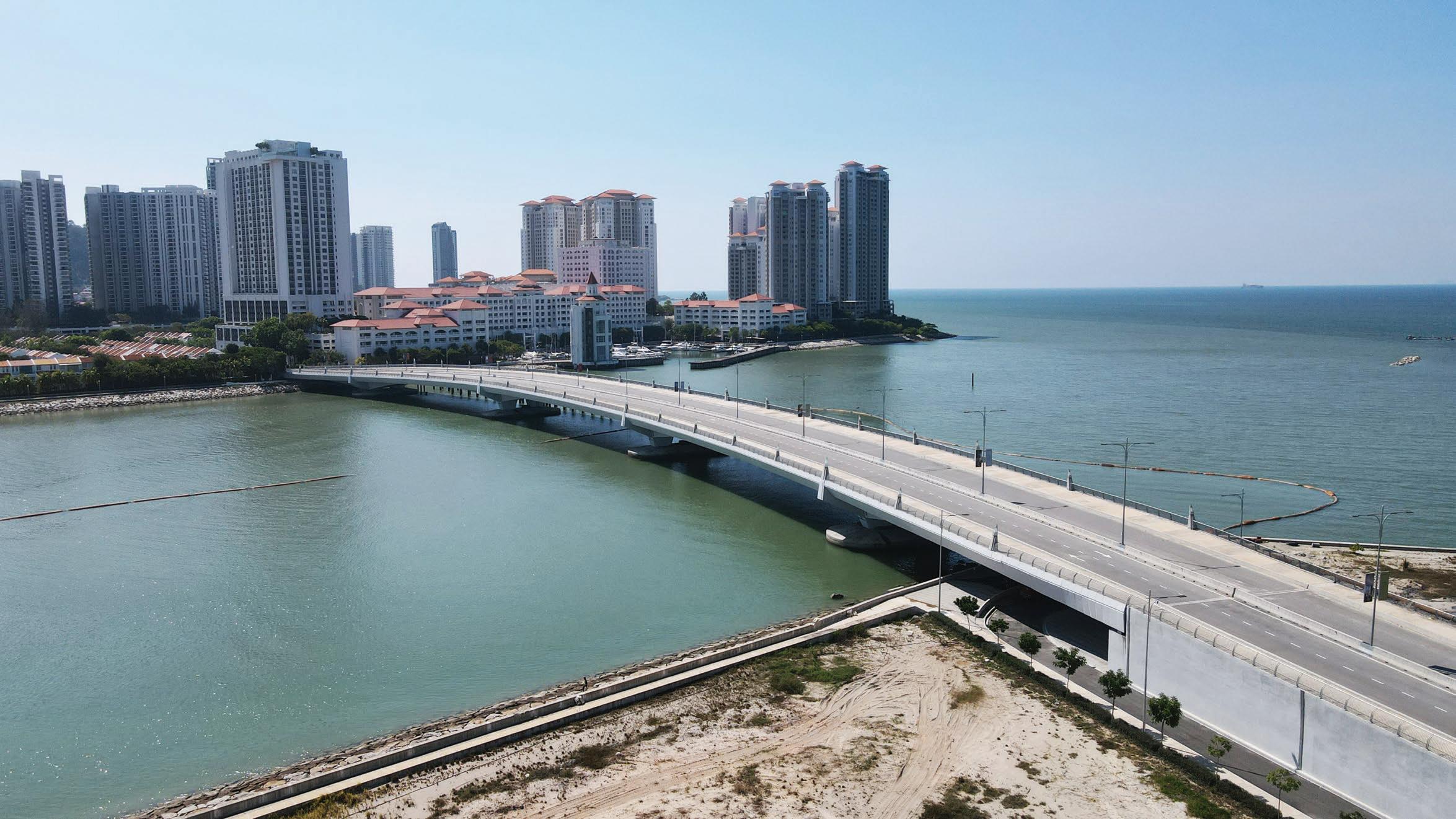


Annual Reports • Booklets • Brochures • Buntings • Business Cards
CD / DVD Replications • Calendars • Cards & Invitations • Certificates
Custom Printings • Envelopes • Folders • NCR Bill Books • Notepads Leaflets • Letterheads • Paper Bags • Posters • Stickers • Others






On October 22, 2024, the ASEAN Federation of Engineering Organisations (AFEO) held the Energy Forum 2024, a significant gathering of engineering professionals and industry leaders, at the Sabah International Convention Centre in Malaysia. The forum, which focused on Charting ASEAN Growth With Digital Transformation, Smart Engineering & Green Solutions, brought together experts to address crucial challenges and opportunities in sustainable energy development across the ASEAN region.
Organised by the IEM Electrical Engineering Technical Division (EETD), IEM Sabah Branch and AFEO Energy Working Group, the forum featured an impressive panel of industry leaders and experts. They included the Executive Chairman of Jentayu Sustainables, Datuk Haji Beroz Nikmal Mirdin, the CEO of SESB and IEM Sabah Chairman, Ir. Mohd Yaakob Jaafar, and the Chairman of Renewable Energy Association of Sabah (REASabah), Datuk Ir. Peter Lajumin. The discussion was moderated by Ir. Kwok Yew Hoe, Council Member and Chair of EETD.
Throughout the 90-minute session, which ran from 4.10 p.m. to 5.40 p.m., the panellists were engaged in profound discussions about the integration of sustainable energy practices and digital transformation in the ASEAN region. The forum addressed 3 primary areas of focus – digital transformation, smart engineering and green solutions – aligned with the United Nations Sustainable Development Goals (SDGs) and Environmental, Social & Governance (ESG) initiatives.
In the digital transformation segment, discussions centred on business model transformation, process automation and optimisation as well as digital product and service innovation. The panellists emphasised on the importance of employee empowerment through digital workspace solutions and the evolution of digital customer experiences in the energy sector. These technological advancements were presented as crucial elements for modernising the ASEAN energy landscape.
Prepared by: Ir. EUR ING Ts. Dr Lau Chee Yong

The smart engineering portion of the forum delved into cutting-edge technologies, including the Internet of Everything (IoE), machine learning and Industry 4.0 applications. Speakers highlighted the significance of interdisciplinary approaches in developing innovative, intelligent and networked products and systems. The discussions emphasised on how digitally influenced development and production processes were creating new value streams in the engineering sector.
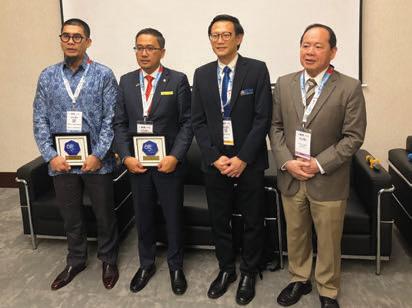
A significant portion of the forum was dedicated to green solutions, reflecting the urgent need for sustainable practices in the region. The panellists explored smart technologies in renewable energy, the implementation of ESG principles in engineering processes and services as well as strategies for engineering towards a circular economy. The discussion also covered decarbonisation efforts, Net Zero innovations and the critical aspect of financing green technology development and implementation.
The forum served as a vital platform for the exchange of ideas and networking among members of the ASEAN engineering community, particularly those in the energy sector. It provided valuable insights from experts in Sabah on the impact and development of sustainable energy

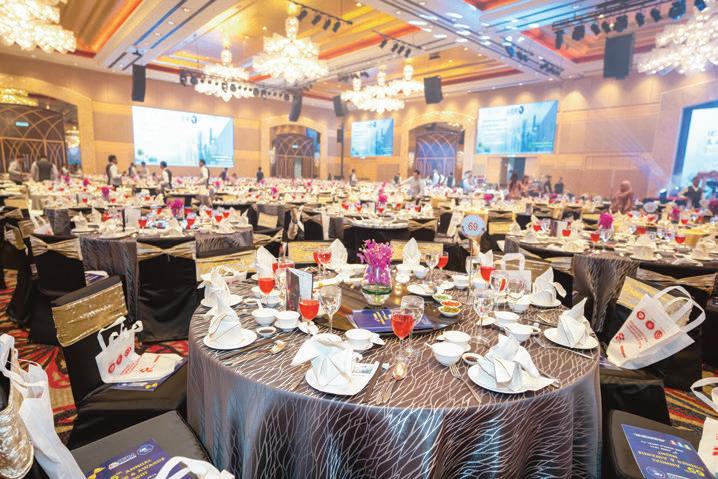
energy challenges while promoting environmentally conscious solutions.
The event concluded with a clear message: The future of ASEAN’s energy sector lies in the successful integration of digital transformation, smart engineering and green solutions. As the region continues to grow and develop, the insights and connections made at the AFEO Energy Forum 2024 will play a crucial role in shaping a more sustainable and technologically advanced future for ASEAN’s energy landscape.
This gathering of minds in Sabah not only showcased the region’s commitment to sustainable development but also demonstrated the powerful potential of collaborative efforts in addressing global energy challenges. As the ASEAN region continues to evolve, the principles and strategies discussed at the forum will serve as valuable guidelines for engineering professionals and industry leaders working towards a more sustainable and technologically advanced future.
On behalf of The Institution of Engineers, Malaysia (IEM), we would like to express our deepest condolence to the bereaved family of YBhg. Datuk Hong Lee Pee, F03823 (1946-2024) on his passing.
We at IEM, honour his contribution to the IEM. May he rest in peace.



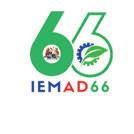
















On August 15, 2024, a delegation from The Institution of Engineers, Malaysia - Negeri Sembilan Branch (IEMNS) and Samsung SDI Energy Malaysia Sdn. Bhd. (SDIEM) paid a visit to the Department of Occupational Safety & Health (DOSH) Negeri Sembilan at Wisma Perkeso, Seremban.
The aim was to introduce industrial leaders and professional engineers of Negeri Sembilan to the newly appointed DOSH Negeri Sembilan Director, Ir. Dr Haji Nor Halim Hassan and to foster stronger collaboration between DOSH Negeri Sembilan and the industry representatives, particularly in promoting occupational safety and health (OSH) standards and practices.


Prepared by: Ir. Mohamad Firdaus Zainal Vice Chairman of IEMNS
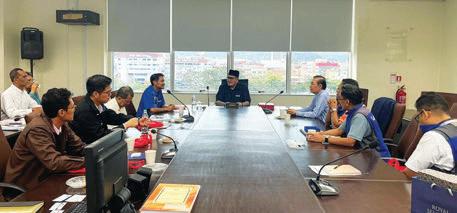
The delegation was led by the late Ir. Dr Oh Seong Por (DPT), who was then Chairman of IEMNS and Infrastructure Director of SDIEM. Representing IEMNS were Ir. Shahrin Amri Jahari, Ir. Chong Chee Yen, Ir. Firdaus Zainal, Dr Baba Md. Deros and Encik Muhamad Shaiful Hussin. SDIEM representatives included Haji Haime (Infrastructure), Mohd Noor (Environmental, Safety & Health) and Nazrin Mohd Noordin (Safety Officer).
Discussions centred on various OSH-related matters, including the importance of complying with safety regulations, the implementation of effective safety management systems and the need for continuous training and education for workers. Ir. Dr Haji Nor Halim said the department was committed to providing guidance and support to industries in their efforts to create safe and healthy workplaces.
The delegation also discussed the possibility of IEMNS supporting the professional development of DOSH staff towards becoming professional engineers. This collaboration would involve providing guidance, mentorship and resources to help them meet the requirements for professional engineering registration.
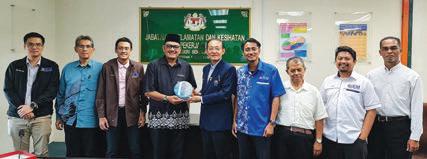
The courtesy visit was a significant step towards strengthening the partnership between DOSH Negeri Sembilan and the industry. The collaboration on PE supervision and staff development will contribute to the improvement of OSH standards in the state as well as foster closer ties between the two organisations and the industry leaders of Negeri Sembilan.

The Institution of Engineers, Malaysia - Negeri Sembilan Branch (IEMNS) and Samsung SDI Energy Malaysia
Sdn. Bhd. (SDIEM) paid a courtesy visit to the Negeri Sembilan Police Contingent Headquarters (IPKNS) on August 20, 2024 and were warmly welcomed by DCP Dato’ Ahmad Dzaffir Mohd Yussof, the Chief of Negeri Sembilan Police Department.
Joined by Officer Hatta (OCP of Seremban), Officer Ming, Officer Ruslan and Officer Suhairi, DCP Dato’ Ahmad Dzaffir shared insights into the current state of policing in Negeri Sembilan.
The IEMNS delegation was led by the late Ir. Dr Oh Seong Por (DPT), who was then Chairman of IEMNS, Ir. Shahrin Amri Jahari (Immediate Past Chairman of IEMNS), Ir. Tiong Ngo Pu, Ir. Firdaus Zainal and Ir. Chong Chee Yen. Ir. Dr Oh also represented SDIEM, accompanied by Mr Veloo and Encik Md. Noor from the Samsung ESH Team.
During the visit, the delegation provided an overview of the new IEMNS committee for 2024/2025, celebrated the 30th anniversary of IEMNS establishment and explained the roles and responsibilities of professional engineers (PEs) as well as details of IEM branches in the country. Ir. Dr Oh also shared information about the SDIEM company profile.
DCP Dato Ahmad Dzaffir expressed his appreciation for the insights into the role of PEs and expressed a keen interest in seeking the expertise of IEMNS PEs for second opinions on the structural integrity and soil grading of existing police stations.
He also highlighted the positive lower trends in crime rates in Seremban, attributing the decrease to improving economic conditions. However, he addressed the growing concern over online fraud and phishing scams, emphasising the need for greater public awareness and vigilance.
In conclusion, DCP Dato’ Ahmad Dzaffir expressed his gratitude for the continued collaboration between the police department and the public, highlighting the strong partnerships formed especially during the COVID-19 pandemic. The courtesy visit served as a valuable platform for fostering closer ties between the two organisations and for exploring potential areas of cooperation in the future.
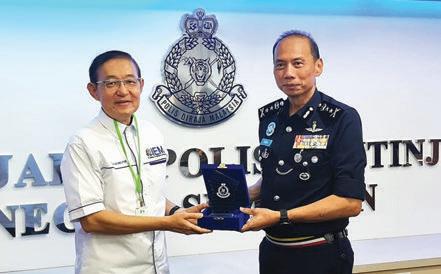
The Institution of Engineers, Malaysia - Negeri Sembilan Branch (IEMNS), and the Technological Association Malaysia, Negeri Sembilan Branch (TAMNS), held a joint blood donation campaign at Seremban Prima Mall on 10 November, 2024. This initiative was conceived by the late Ir. Dr Oh Seong Por (DPT), who was then the Chairman of IEMNS and Vice Chairman of TAMNS.
The campaign, co-supported by CMH Specialist Hospital Seremban, Hospital Tuanku Ja’afar Seremban, INTI International University Nilai, MCS College, Lions Club of Seremban Central, KL Kinetik and the Buddhist Missionary Society Malaysia, collected 96 units of blood which contributed significantly to the local hospital blood supply.
Aside from blood donation, the event also offered other benefits to the public such as free eye and health screenings as well as informative health talks presented by medical professionals. Dr William Choo, Consultant Orthopaedic from CMH Specialist Hospital, delivered a talk on Bulletproof Your Back, while Dr Anu Suria, a Family Medicine Specialist and medical lecturer, presented on Defeat Diabetic: Empowering Through Awareness.
The event also served as a platform for knowledge sharing and professional development, particularly for students. TAMNS members presented talks on the association’s background, pathways to becoming a Technologist (Ts.) and Technician (Tc.) and the emerging field of electric vehicles. A representative from the National Higher Education Fund (PTPTN) provided valuable information on educational financing options, specifically about SSPN. Finally, Ir. Mohamad Firdaus from IEMNS guided attendees on the path to becoming a professional engineer.
This joint initiative by IEMNS and TAMNS marked a significant milestone in their collaboration. The event not only addressed a critical need for blood donations but also provided valuable health information and professional career guidance for the public. The late Ir. Dr Oh, who passed away on 4 January 2025, will be remembered for his vision in initiating this successful community outreach programme.

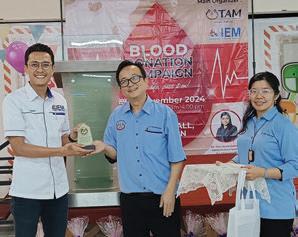
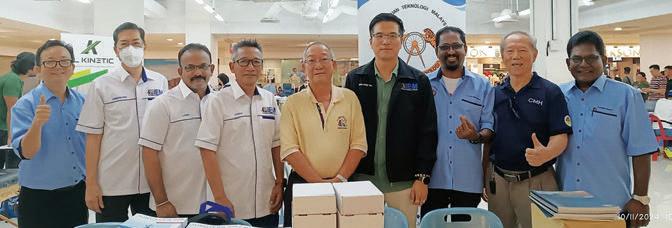

Photography by:
Ir. Prof. Dr Zuhaina Zakaria
Nestled on Japan’s western coast, Kanazawa is a city known for its rich cultural heritage, traditional crafts and historic districts. The once thriving samurai town has gracefully evolved into a modern hub while preserving its unique identity. At the heart of this transformation stands the Tsuzumimon Gate, a striking symbol of Kanazawa’s harmony between past and future.
Tsuzumimon Gate at Kanazawa Station is not just an entrance but it combines art, culture and engineering. Designed by Shirae Associates and opened in 2005, it was named one of the 14 Most Beautiful Stations in the World by American travel magazine, Travel + Leisure, in 2011.
Inspired by the tsuzumi drums of Noh theatre, the 13.7m-high gate is supported by 2 thick pillars made of laminated timber. These combine natural aesthetics with engineering innovation to withstand heavy snow and extreme weather. Above, the sweeping roof employs advanced load distribution, blending elegance with seismic resilience.
The gate serves as a bridge between history and progress. It stands as a vivid reminder of how tradition, technical excellence and cultural insight can coexist, turning a visionary design into a landmark.
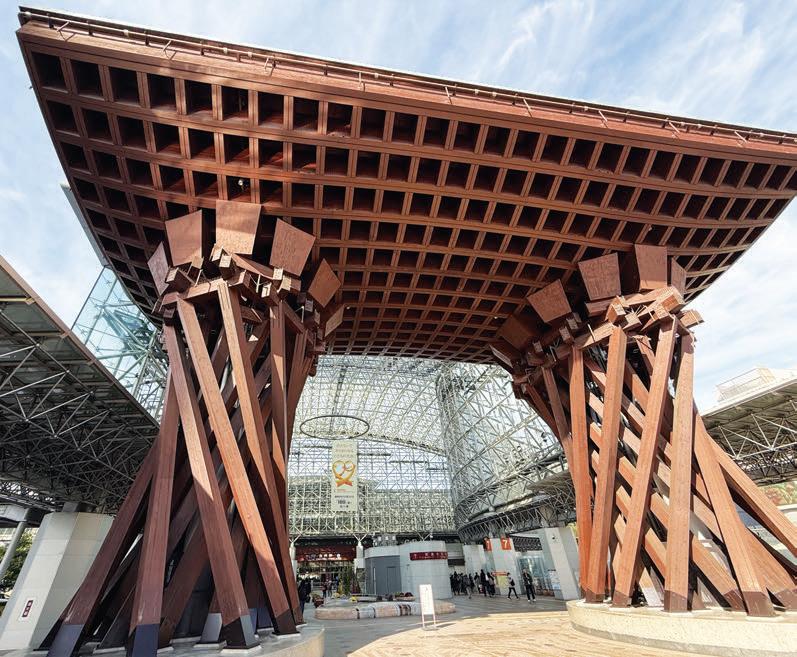

The Institution of Engineers, Malaysia

Jointly Organised between Geotechnical Engineering Technical Division (GETD) & Malaysian Geotechnical Society (MGS)
DATE : 3-4 DECEMBER 2025
TIME : 9.00 A.M. - 6.00 P.M.
VENUE : GRAND WYNDHAM, BANGSAR
Conference Themes
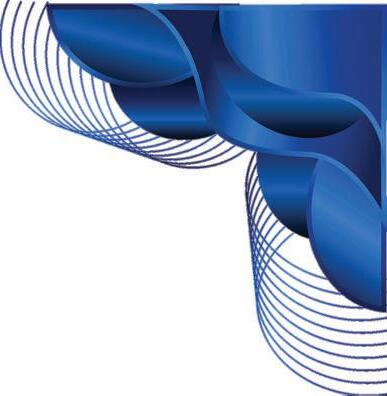
We invite submissions on a wide range of topics, including but not limited to:
• Soil Mechanics and Foundation Engineering
• Slope Stability and Landslides
• Ground Improvement Techniques
• Geosynthetics applications in Geotechnical Engineering
• Deep Excavations
• Soil Investigation and Testing
• Environmental Geotechnics
• Pavement Foundation
• Geotechnical Aspects of Sustainable Development
• Case Histories and Practical Applications on Megaprojects
• Abstracts should be no more than 300 words and not exceeding two (2) pages.
• Full papers must be written in English and submitted in Microsoft Word and PDF file format.
• All submissions must be original and not previously published or under consideration for publication elsewhere.
• Papers will be peer-reviewed and accepted papers will be published in the conference proceedings. Submission Guidelines
An Outstanding Paper Award will be presented to the best paper submitted to the conference. The award will recognize exceptional research, innovation, and contribution to the field of geotechnical engineering. The winning paper will be selected by a panel of experts and announced during the conference. The selected paper will also be considered to be published under an International indexed publications, subject to approval by the panel of experts.
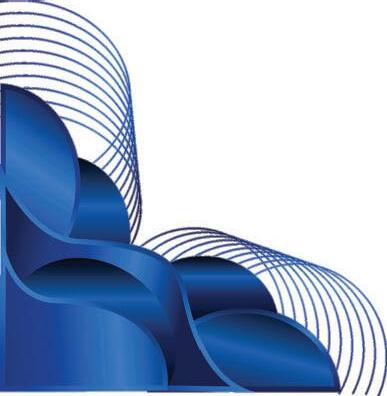
Important Dates
Abstract submission deadline
Notification of abstract acceptance
Full paper submission deadline
Notification of paper acceptance
Submission of the presentation slide
Conference day
: 28th February 2025
: 31st March 2025
: 1st July 2025
: 15th September 2025
: 15th October 2025
: 3rd & 4th December 2025
Submission of abstracts/full papers and enquiries:
All abstracts and full papers shall be submitted to the Organising Committee via email to, Ms Aisyah at: mgc2025@gmail.com or Tel: 03-7890 0132
We look forward to your contributions and to welcoming you to the Malaysia Geotechnical Conference 2025!

The primary objec�ve of JURUTERA is to publish ar�cles of general interest to IEM members. JURUTERA provides reports and news on professional ac�vi�es, branch ac�vi�es, and current issues of interest. It also serves as one of the medium of communica�on between the Ins�tu�on and its members, providing no�ces and announcements of IEM.
Ar�cles submi�ed for publica�on in JURUTERA must be original, light reading material, unpublished elsewhere, and of interest to IEM members. Technical content should be presented in a readable and accessible style. JURUTERA is published Monthly, and can be viewed in the IEM website.
1. Since JURUTERA is not a peer-reviewed publica�on, research ar�cles can be forwarded to the Editor of IEM Journal. However, ar�cles based on research conducted are welcome.
2. A technical ar�cle are limited to 2,400 words. The word count must be reduced appropriately with each addi�onal figure or diagram or photo.
3. The author may be requested to modify the ar�cle or to clarify certain points in the ar�cle. The Editorial Board reserves the right to edit manuscripts for clarity, readability, length and content.
4. An ar�cle should communicate informa�on efficiently and effec�vely to readers. The prose should follow a coherent line of thought. Sidebars, tables and figures may be used where appropriate. All mathema�cal equa�ons must be properly checked by the authors themselves, using MS Excel formulae format. It is suggested that all ar�cles have a summary or conclusion. Technical or formal ar�cles may list the references cited using the IEE style.
5. The actual publica�on of an ar�cle is at the sole discre�on of the Editorial Board.
1. Each report shall be limited to 800 words: All reports should be concise and precise in view of the limited publica�on space. The word count must be reduced appropriately with each addi�onal figure or diagram or photo. As the sizes of such inser�ons affect their word-countequivalent, it will be le� to the judgement of the authors on the number of words to cut. The Bulle�n Editor retains the right to edit or further reduce the number of words.
2. All reports are subjected to selection for publication by the Editorial Board: To be�er determine themselves on the suitability of the reports, the Editorial Board is free to seek further advice from par�es deemed fit to do so, while avoiding conflict of interest such as asking the same Technical Division to vet their own reports.
3. Reports on activities should be value-adding to the readership: For example, reports on talks should be akin to an extended abstract from which readers could get the gist of the talk and the subsequent Q&A. Reports on visits, forums and others shall serve a similar purpose, e.g. highligh�ng cri�cal observa�ons, issues, resolu�ons that will be of interest to the readers. Other than the basic informa�on such as �tle, venue, name and affilia�on of the speaker, details which are of li�le interest to most readers (such as the �me of arrival at a des�na�on, presenta�on of a token of souvenir etc) should be excluded
4. A report should preferably be submitted within a month from the date of activity: Considering that some Technical Divisions have internal ve�ng process prior to submission, the Editorial Board will not be unreasonably strict with this requirement.
5. Although the Editorial Board will strive to publish the reports in a �mely manner, the Editorial Board reserves the right to Schedule to a later date, e.g. to provide room to clear the backlog, or to be�er fit the theme of the month. Un�l the backlog is cleared, each issue of JURUTERA will contain a mix of earlier submi�ed and rela�vely current reports.
6. It is also the discre�on of the Bulle�n Editor to decide on the reports to be uploaded in the IEM webportal “Jurutera Online”.
1. It is recommended that authors peruse published ar�cles in past issues of JURUTERA to get a feel for the style, format and nature of the ar�cles. A technical ar�cle may use a formal style, while an opinion piece may be wri�en in a very casual style. The Editorial Board prefers to refrain from imposing par�cular styles.
2. Ar�cles should be in U.K. English. Submi�ed material is expected to be of a high standard.
3. Since ar�cles submi�ed for JURUTERA are not peer-reviewed, the onus is on the author to ensure that the ar�cle is factually correct and the arguments are sound
4. An ar�cle should be wri�en in a clear and direct style. Paragraphs and sentences should be short and easily diges�ble. Long-winded and tedious technical wri�ng styles must be avoided. Wri�ng is a two-way street; remember that you are wri�ng for an audience that consists largely of both technicallyminded trained professionals and budding engineers. The reader should be moved along briskly; reading JURUTERA ought to be an enjoyable and sa�sfying ac�vity.
Authors are requested to submit a recent passport-sized photograph together with a brief profile of themselves. Authors are also encouraged to provide keywords for ar�cles submi�ed
Electronic copies of ar�cles may be sent as a�achments to the following e-mail address: pub@iem.org.my. Your documents should have meaningful and unambiguous names. Large documents may be sent compressed using the ZIP archive format and should be sent as separate a�achments.
All photographs should be of high quality, ready for typese�ng. Image files should be in JPG/JPEG format, and of a high resolu�on (at least 300 DPI.) Drawn illustra�ons must be of high quality, as they will be used “as is”. All figures, tables, graphs and photographs must be rightly cap�oned
It is necessary to adopt a conserva�ve policy on the fair use of copyrighted material. The Editorial Board reserves the right to reject ar�cles that exercises the doctrine of fair use in an excessive manner. It is up to the author to obtain permission, if necessary, for the use of copyrighted material.
An ar�cle must not overtly promote a proprietary or commercial product. Such ar�cles will be immediately rejected. Proprietary material such as trade names and proprietary terms should be avoided. Prose that seems advertorial in nature is unwelcome. An objec�ve and balanced technical discussion involving commercial products is acceptable
To all Members,
Date: 22 January 2025
LIST OF CANDIDATES ELIGIBLE TO SIT FOR THE PROFESSIONAL INTERVIEW FOR THE YEAR 2024
The following is a list of candidates who are eligible to sit for the Professional Interview for the year 2025.
According to the IEM Bylaws, Section 3.8, the names listed below are published as eligible candidates to become Insitution Members, provided that they pass the Professional Interview in 2025.
If there are any Corporate Members who have objections against any candidate deemed unsuitable to sit for the Professional Interview, a letter of objection can be submitted to the Honorary Secretary, IEM. A letter of objection must be submitted within one month from the date of publication.
Ir. Prof. Dr Tan Chee Fai IEM Honorary Secretary
NEW APPLICATION
NAME QUALIFICATION
CIVIL ENGINEERING
RAHIM BIN KAMBA BE HONS (UTM) (CIVIL, 2018)
ABDUL HADI BIN ABDUL KARIM BE (UITM) (CIVIL, 2015)
ELECTRICAL ENGINEERING
AHMAD FAYYADH BIN ZULKIFLI BE HONS (UITM) (ELECTRICAL, 2013)
SAW VOON TAT BE HONS (LINCOLN) (ELECTRICAL & ELECTRONIC, 2003) ME HONS (MMU) (ELECTRICAL & ELECTRONIC, 2021)
MUHAMMAD IKMALHAKIM BIN OTHMAN BE HONS (UTM) (ELECTRICAL, 2019)
MECHANICAL ENGINEERING
MOHAMAD ZULKARNAIN BIN NAYAN BE HONS (UNITEN) (MECHANICAL, 2013)
APPLICATION FOR CORPORATE MEMBER
NAME QUALIFICATION
CIVIL ENGINEERING
JOSEPH TANG LON MOOD BE (UNIMAS) (CIVIL,1999)
MEMBER TRANSFER
MEMBERS NO. NAME QUALIFICATION
CIVIL ENGINEERING
89484 WONG SIONG HO BE HONS (PORTSMOUTH) (CIVIL, 2009) MSc HONS (PORTSMOUTH) (CIVIL, 2010)
128484 LIEW SIONG TZE BE HONS (UM) (CIVIL, 2019)
47840 LIM CHIE TUNG BE HONS (USM) (CIVIL, 2012)
114365 LIM KENT KHAI ME HONS (MANCHESTER) (CIVIL & STRUCTURAL, 2018)
28265 CHAN KHANG HAI BE HONS (USM) (CIVIL, 2009)
ELECTRICAL ENGINEERING
90790 MOHD ROSNAN BIN MOHD NASIR BE HONS (UTM) (ELECTRICAL, 2014)
117165 RAMLAN BIN LATIP BE (UTM) (ELECTRICAL, 2006) MSc (NOTTINGHAM) (ELECTRICAL, 2016)
23666 SIVAM A/L KANDIAH BE (UNITEN) (ELECTRICAL POWER, 2010)
70103 THAVENTRAN A/L PANCHANATHAN BE HONS (UTM) (ELECTRICAL, 2017)
CHEMICAL ENGINEERING
41440 TAN SZE LENG BE (UPM) (CHEMICAL, 2012)
MECHANICAL ENGINEERING
30239 RUZAINI SAFWAN BIN MOHD MAULUD BE HONS (UITM) (MECHANICAL, 2011)
111774 BONG PEI CHIEN BE HONS (SWINBURNE) (MECHANICAL, 2020)
79297 DINISHKARAN PILLAI BE (UNITEN) (MECHANICAL, 2010)
TRANSFER TO CORPORATE MEMBER
MEMBERS NO. NAME QUALIFICATION
CIVIL ENGINEERING
94034 MOHD AKHMAL BIN MD ARIPIN BE (UTM) (CIVIL, 2013) ME HONS (UTM) (CIVIL, 2014)
22122 CHIN PAK YUI BE (SHEFFIELD) (CIVIL,1999)
107530 LIM SHU KOON BE (UPM) (CIVIL, 2019)
ELECTRICAL ENGINEERING 42462 ERWIN ZIKA BIN ZAKARIA BE (UTM) (ELECTRICAL-MECHATRONICS, 2002) 45854 MUHAMAD AKMAL BIN CHE ANI BE (UITM) (ELECTRICAL, 2010)
(SHEFFIELD) (MECHANICAL & MANUFACTURING, 2006) MSc HONS (SHEFFIELD)
The institution expresses its gratitude to all who have contributed to the Wisma IEM Building Fund. IEM members and readers who wish to make a donation may do so by downloading the form from the IEM website at http://myiem.org.my or by contacting the secretariat at +603-7890 0130 / 136 for further information. The list of contributors for December 2024 is as shown in the table below:















